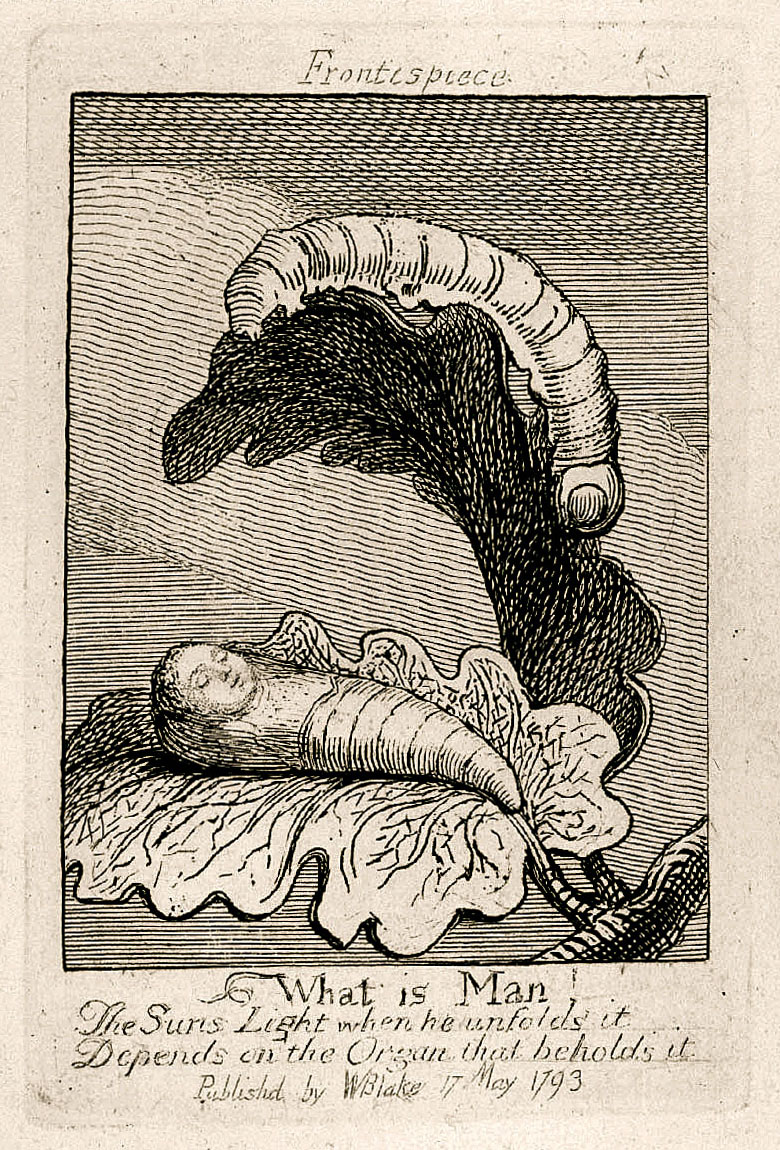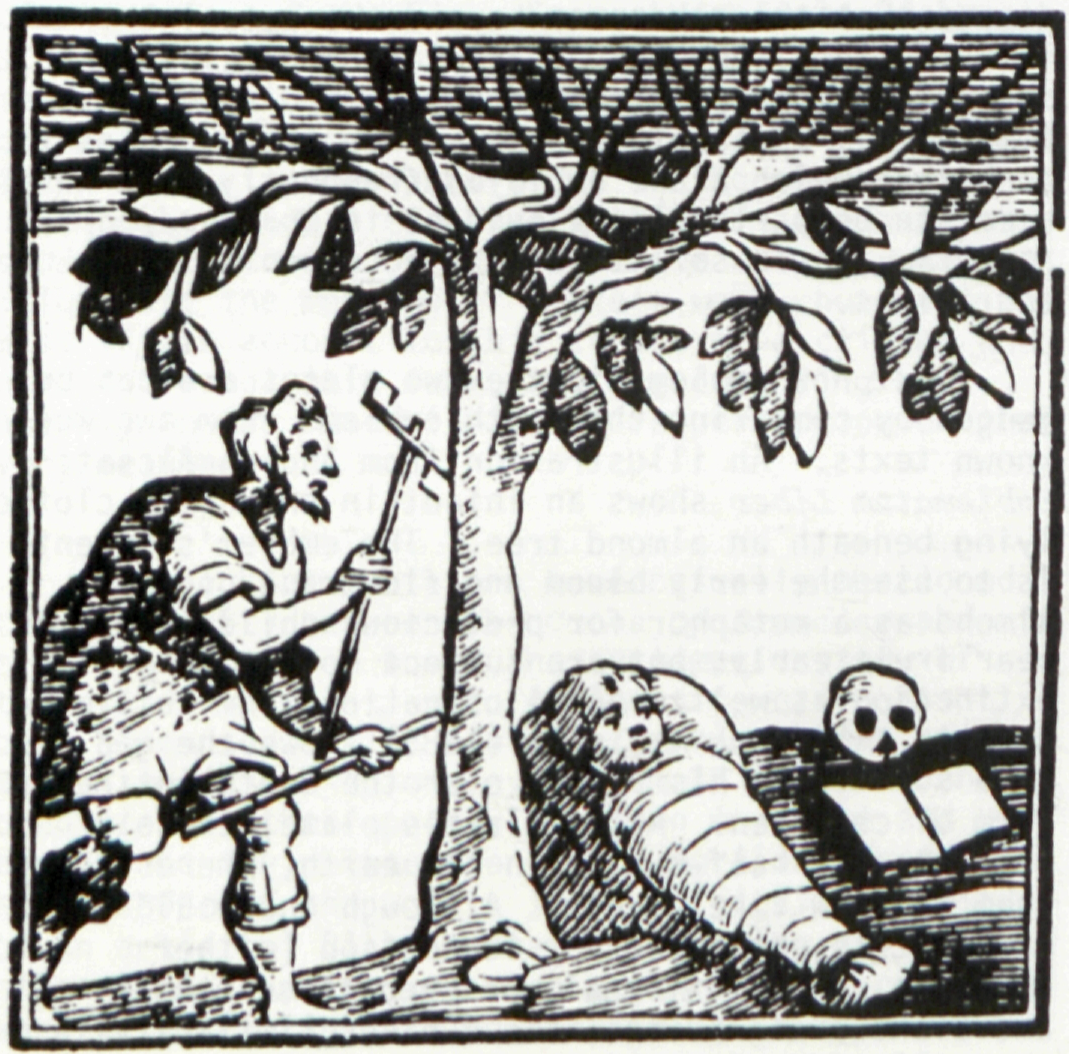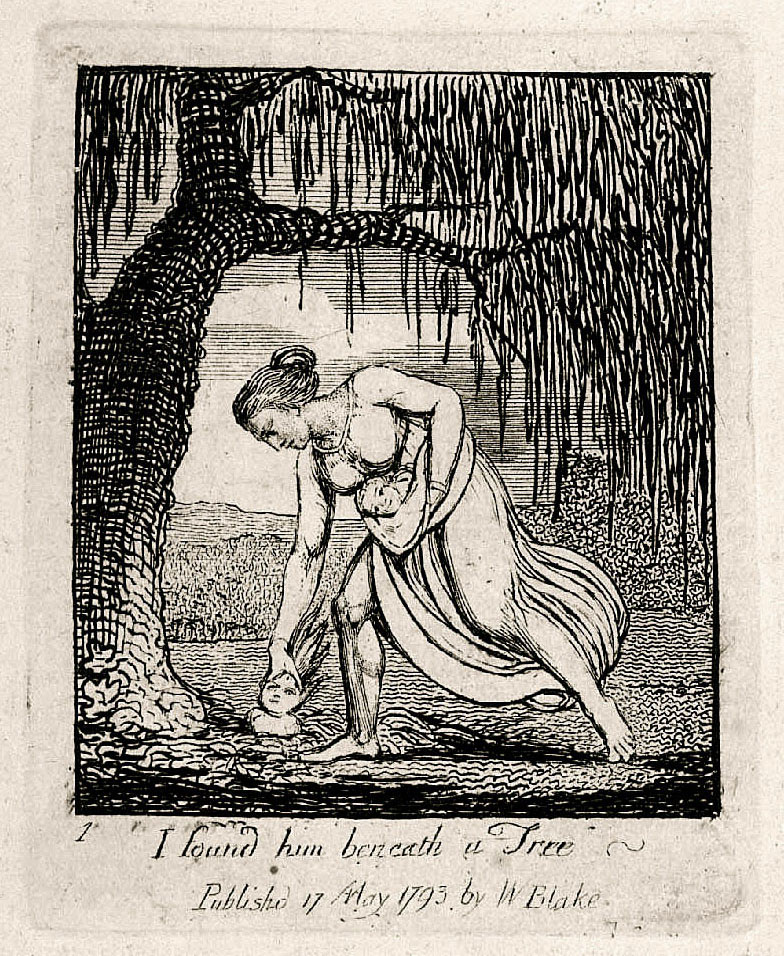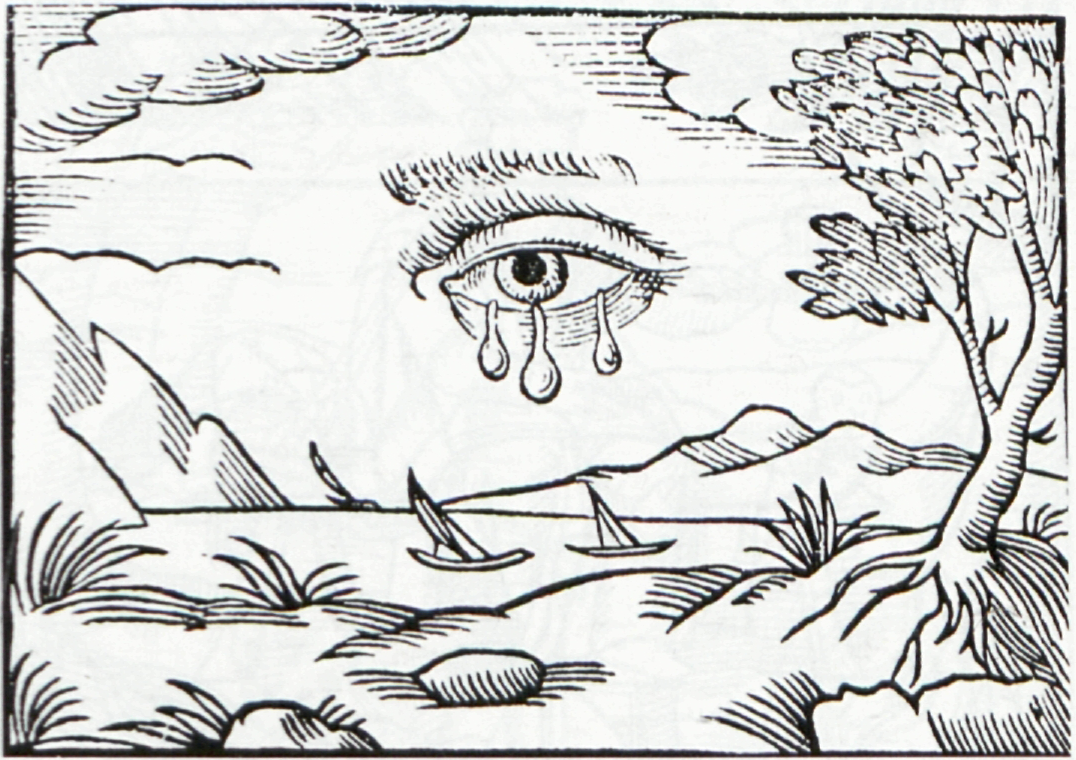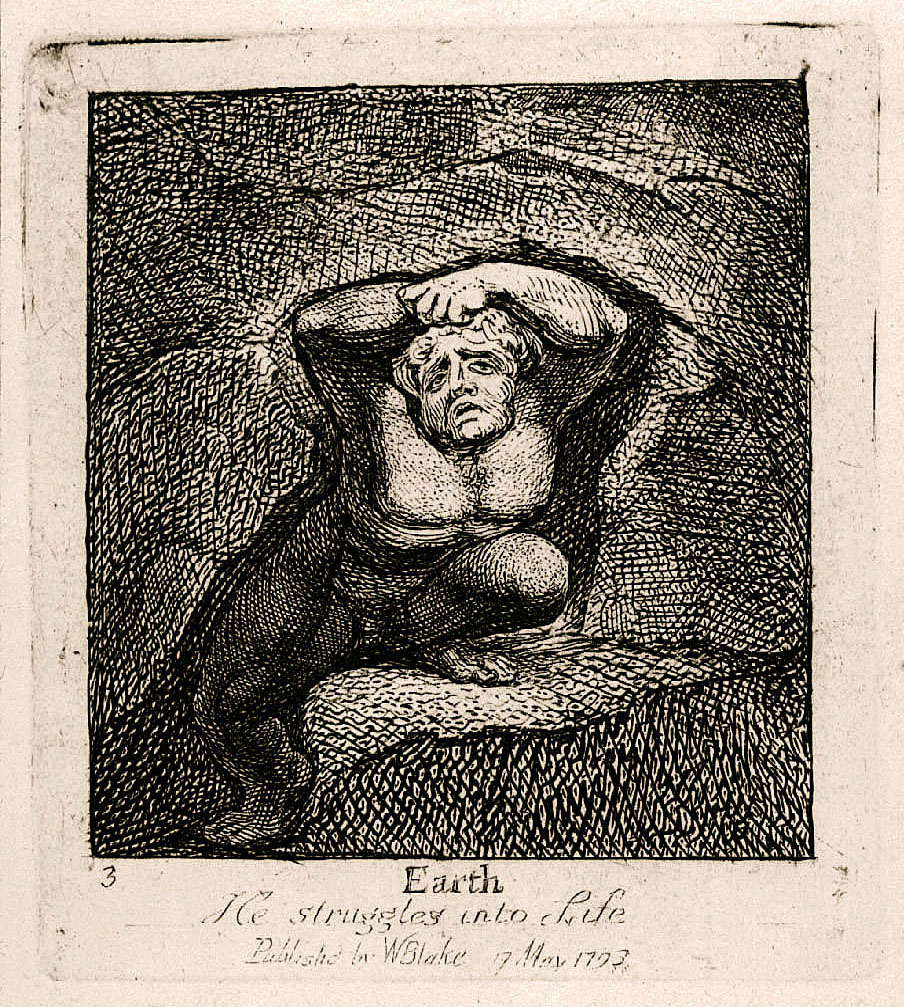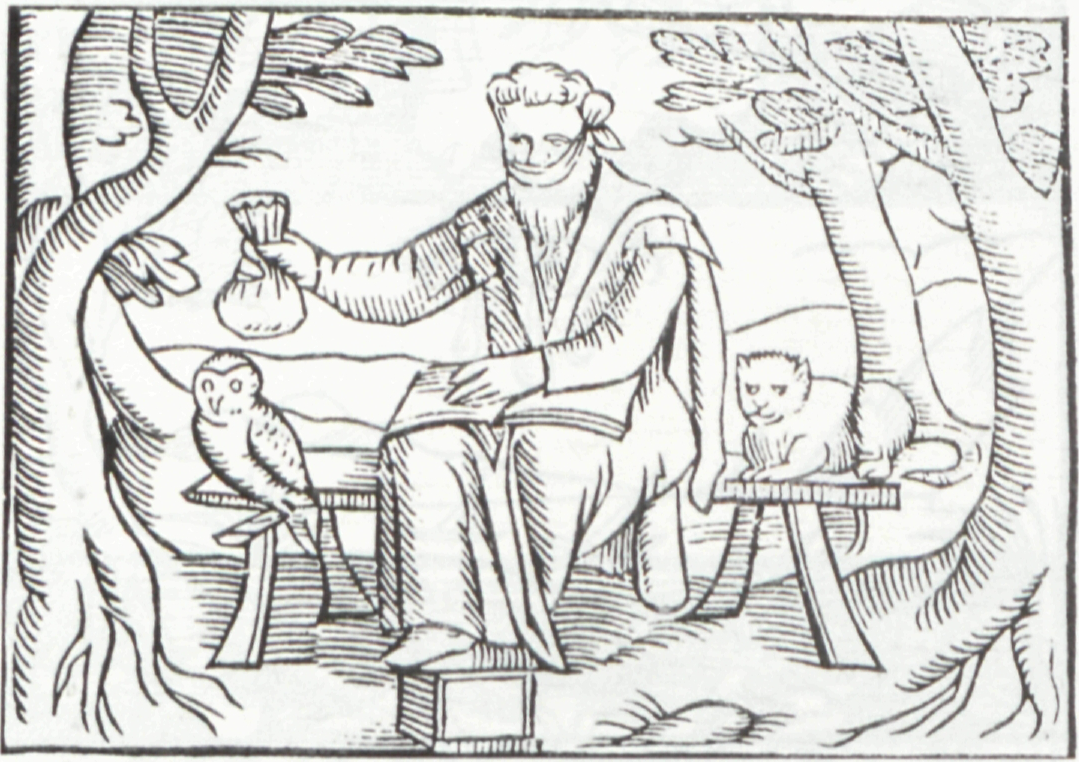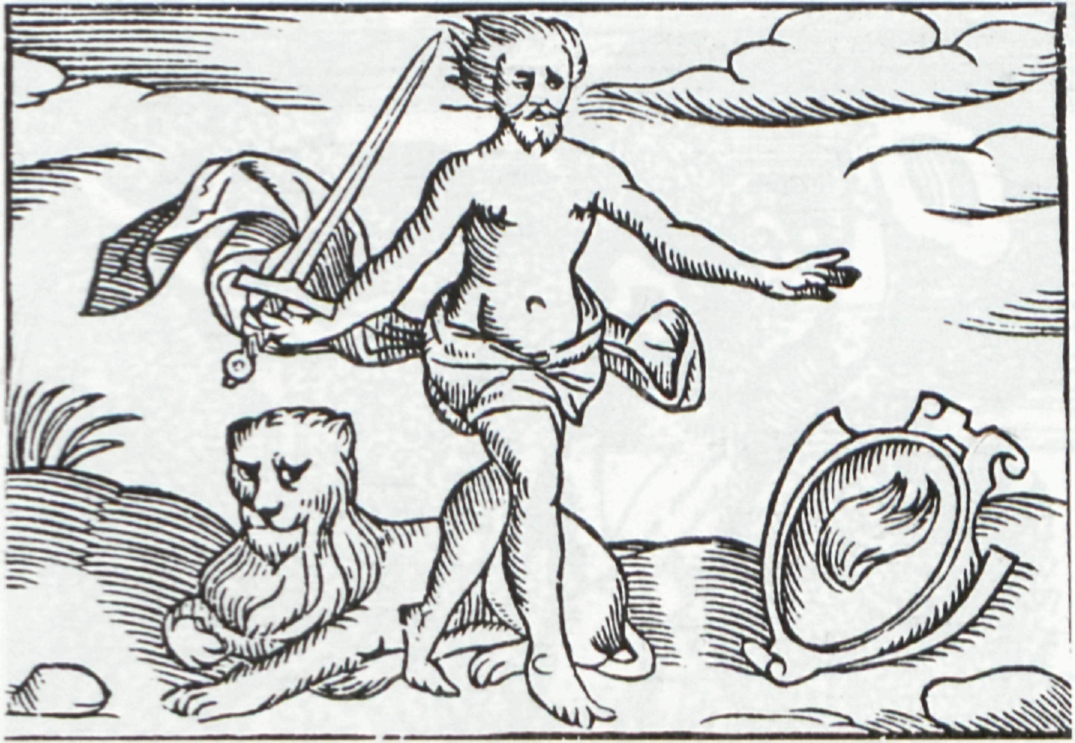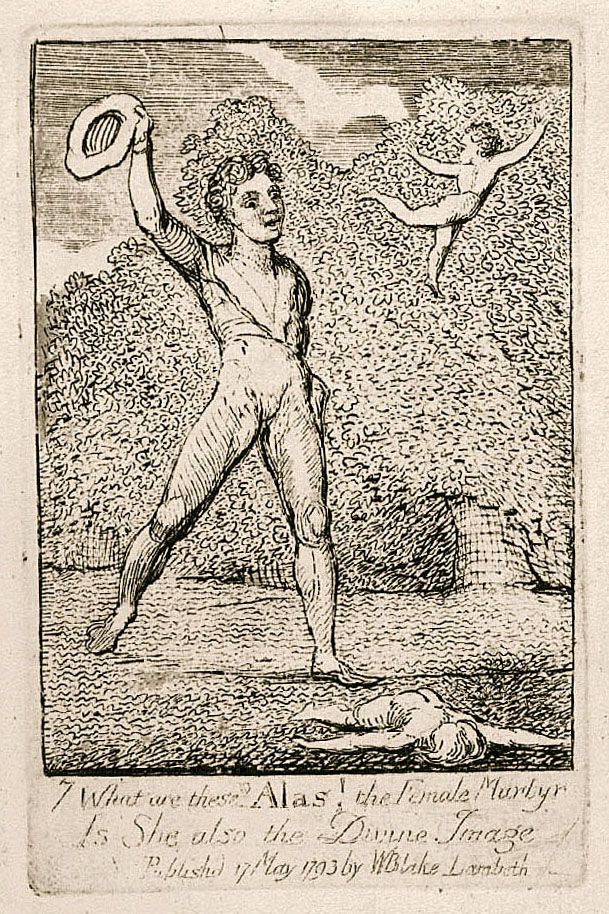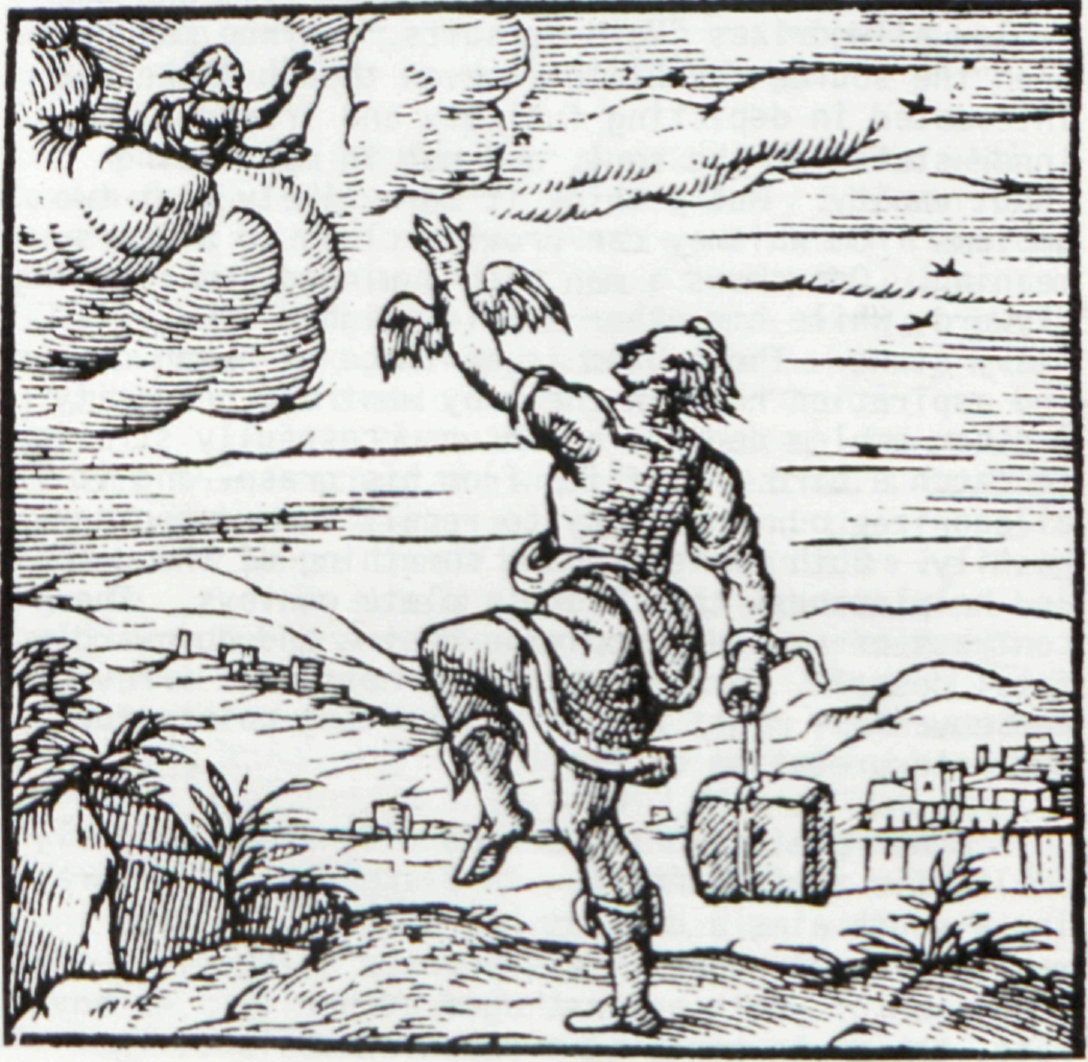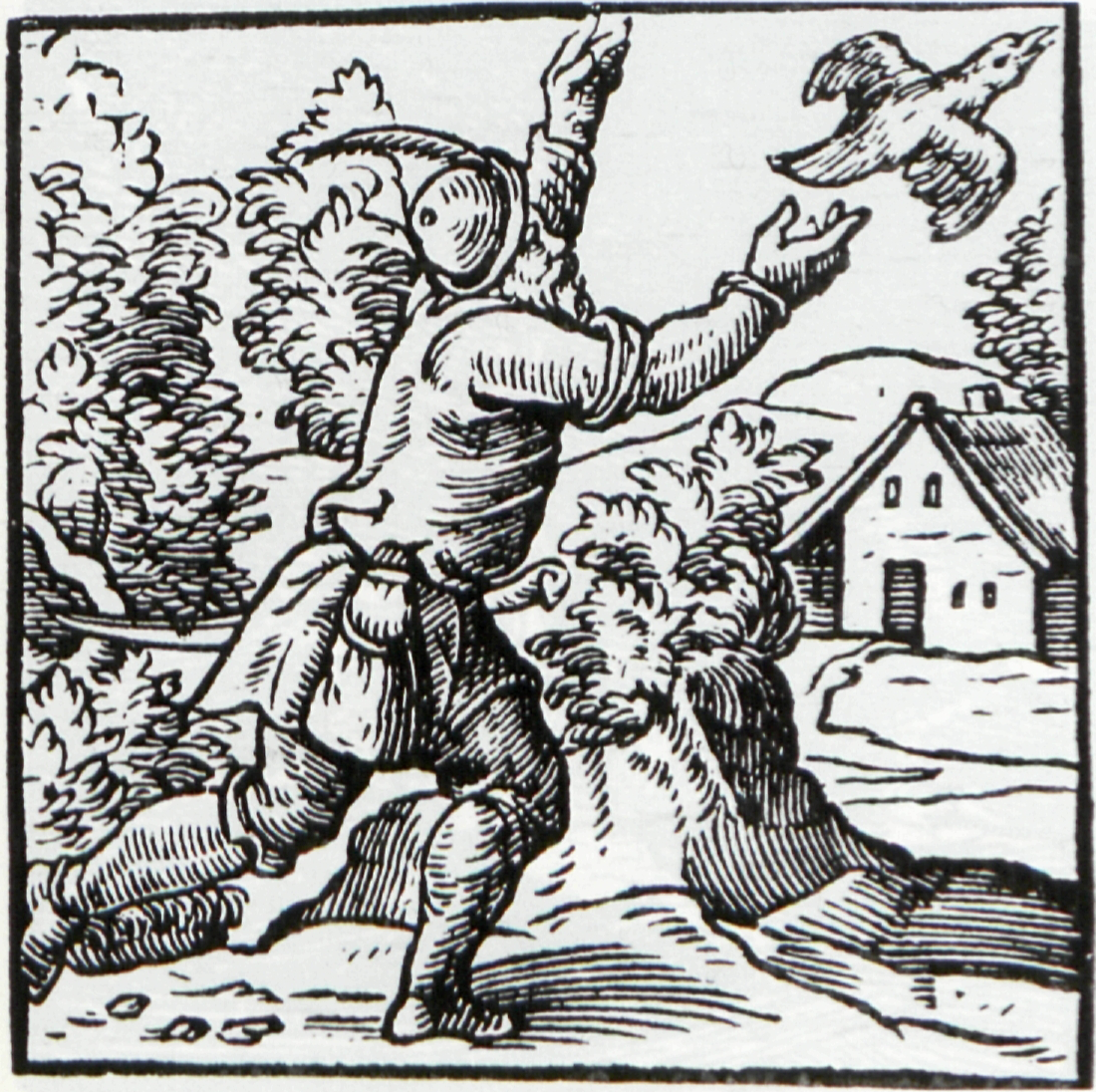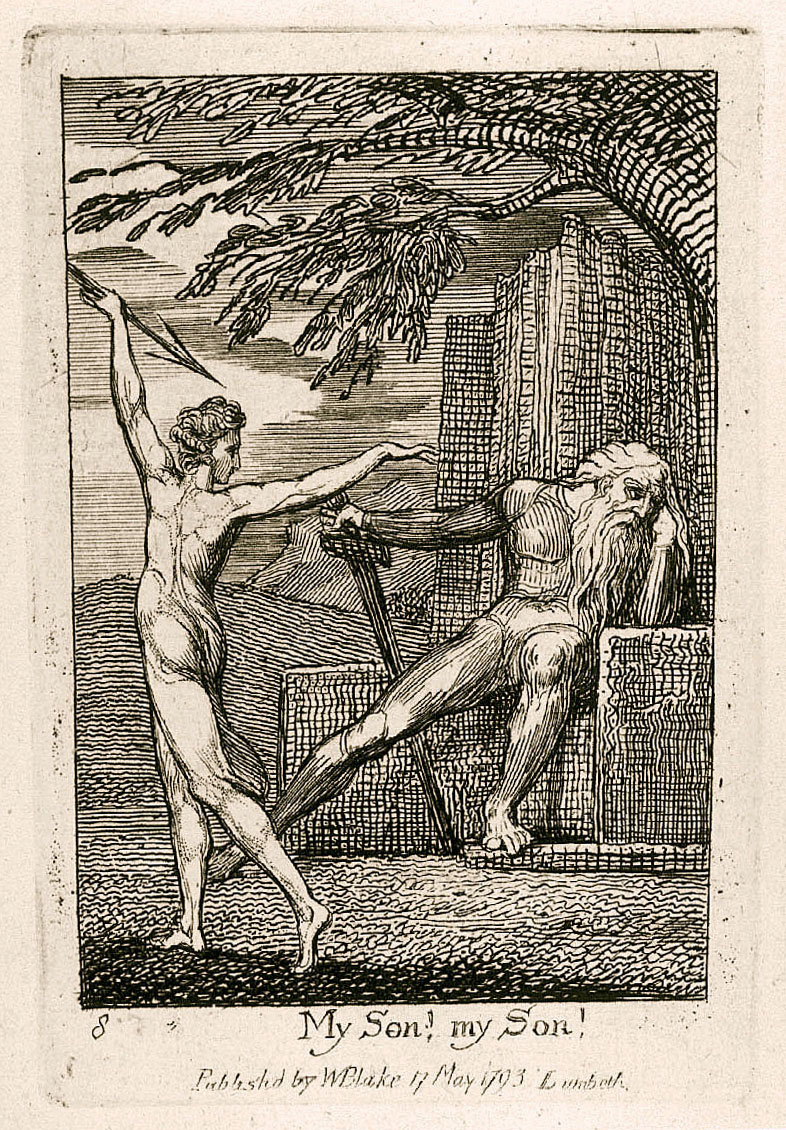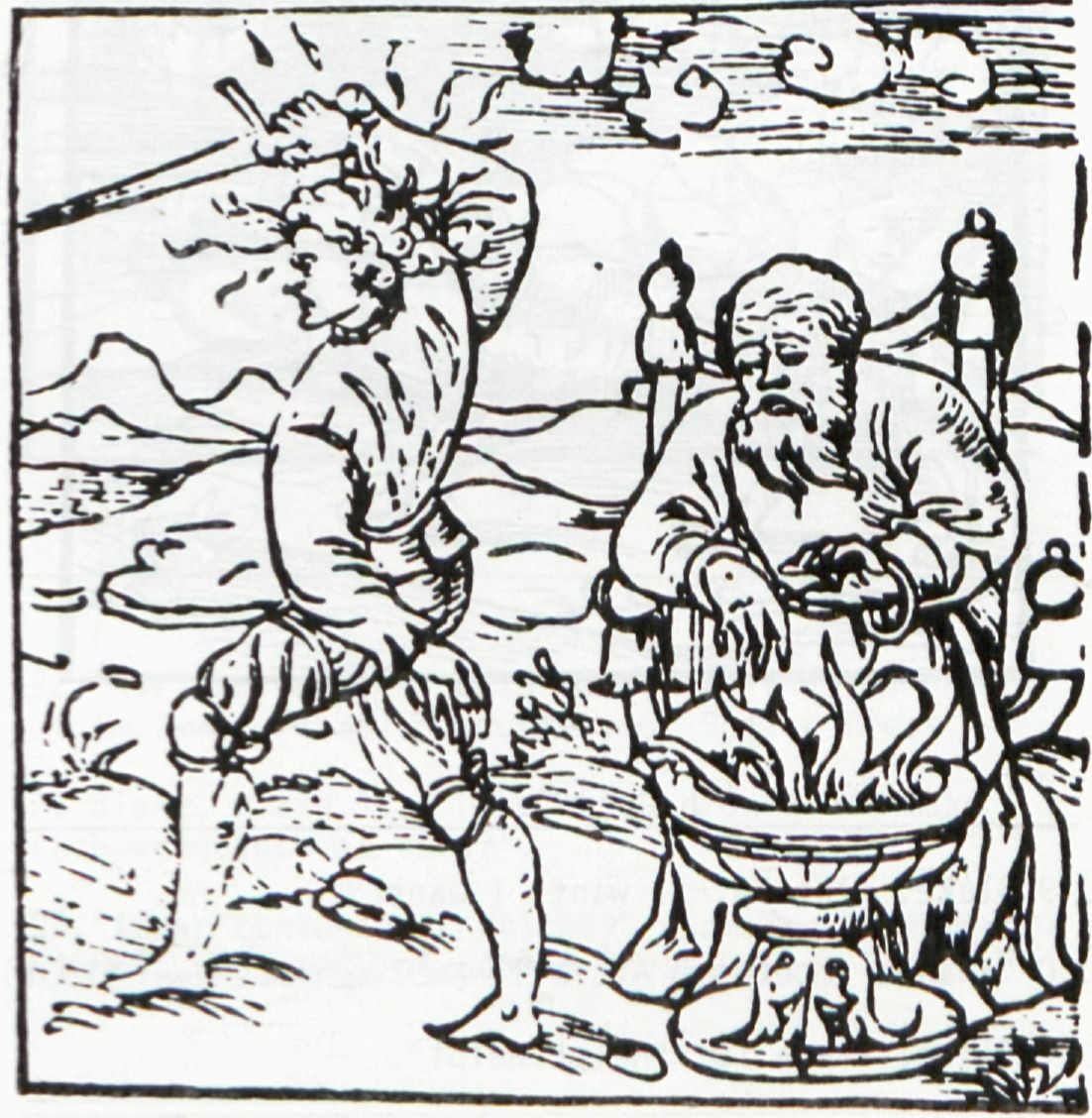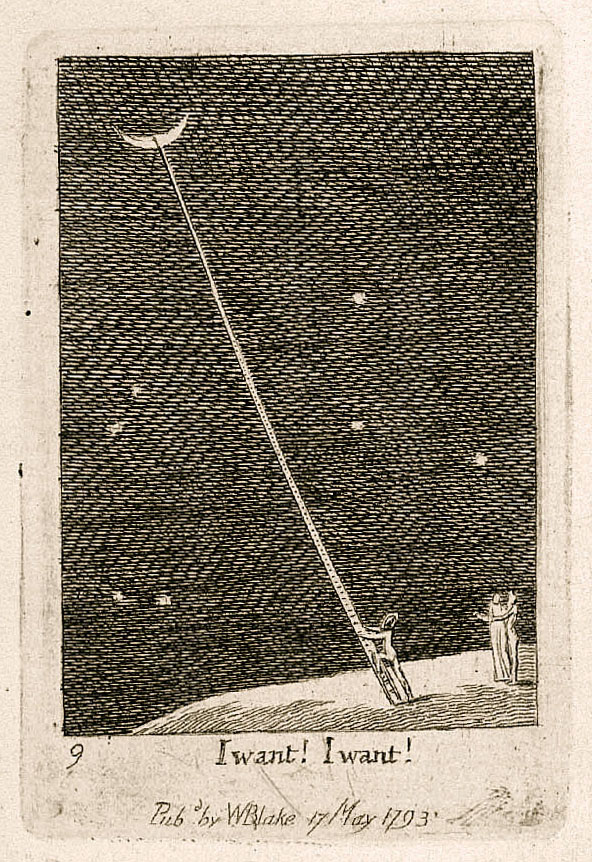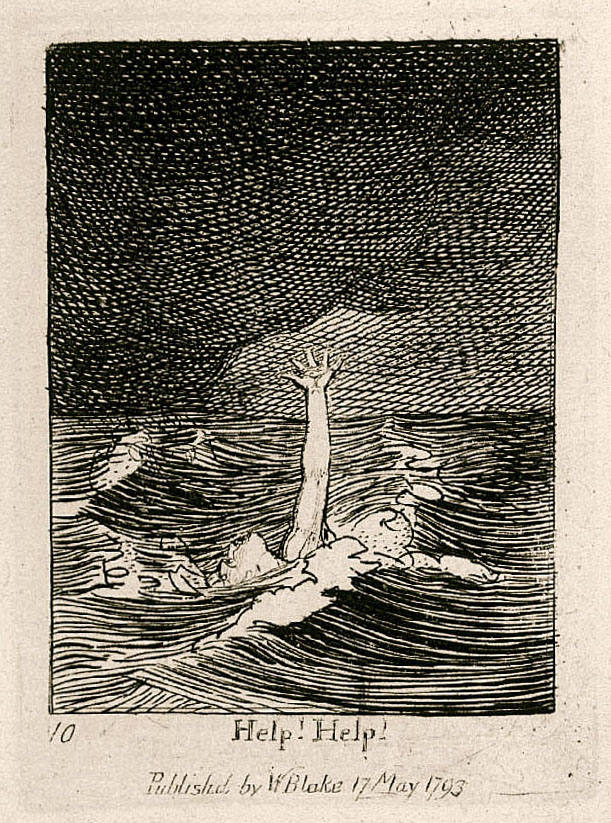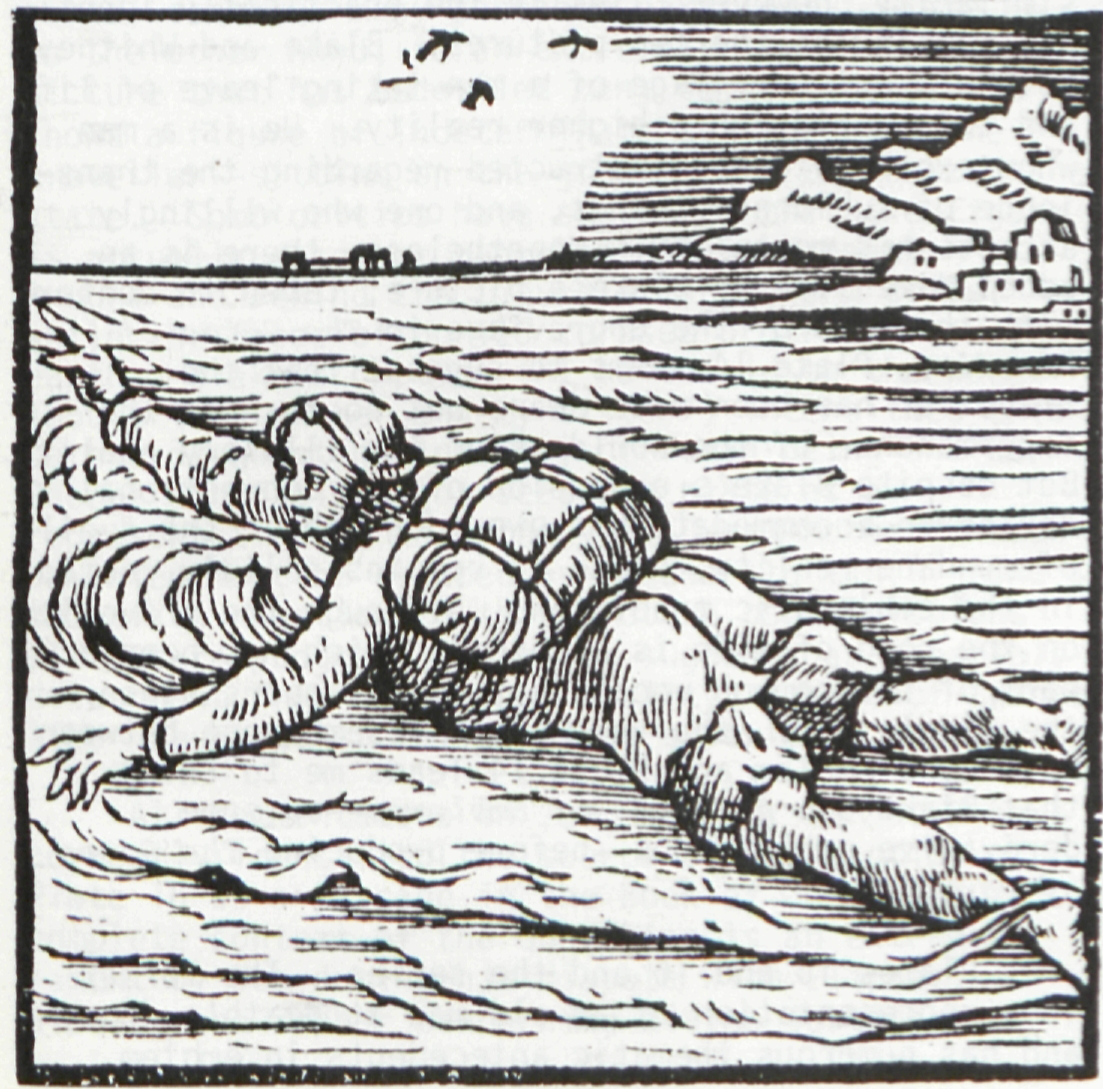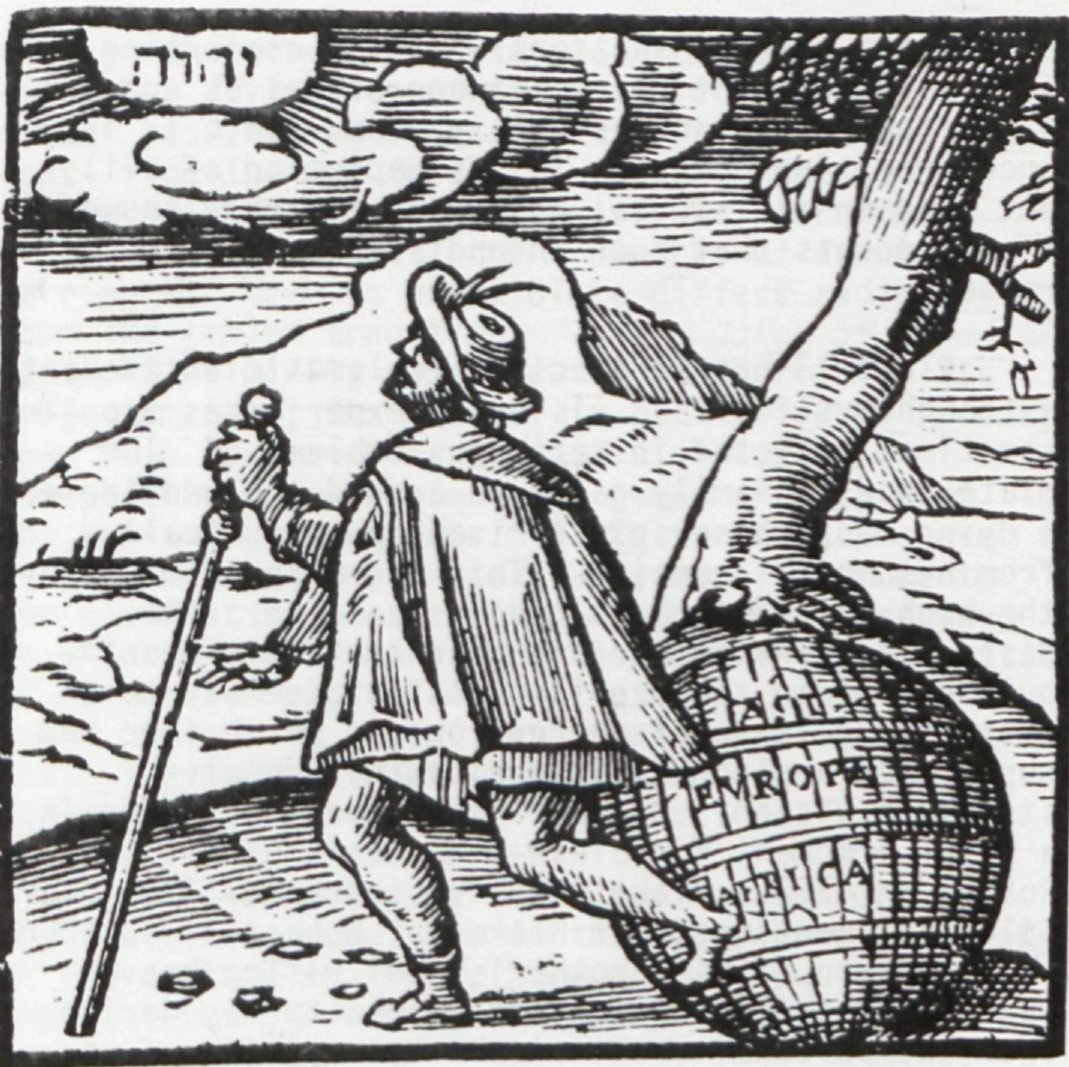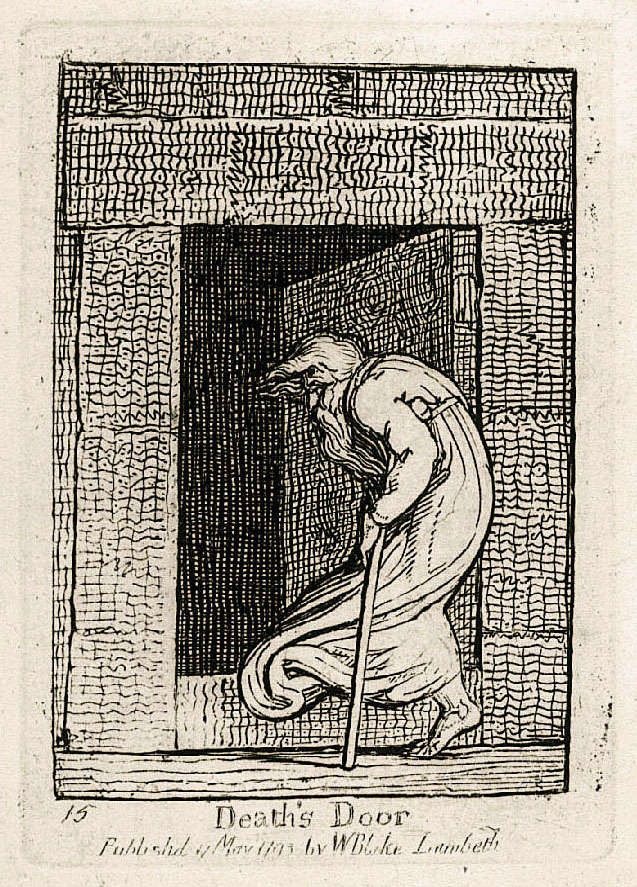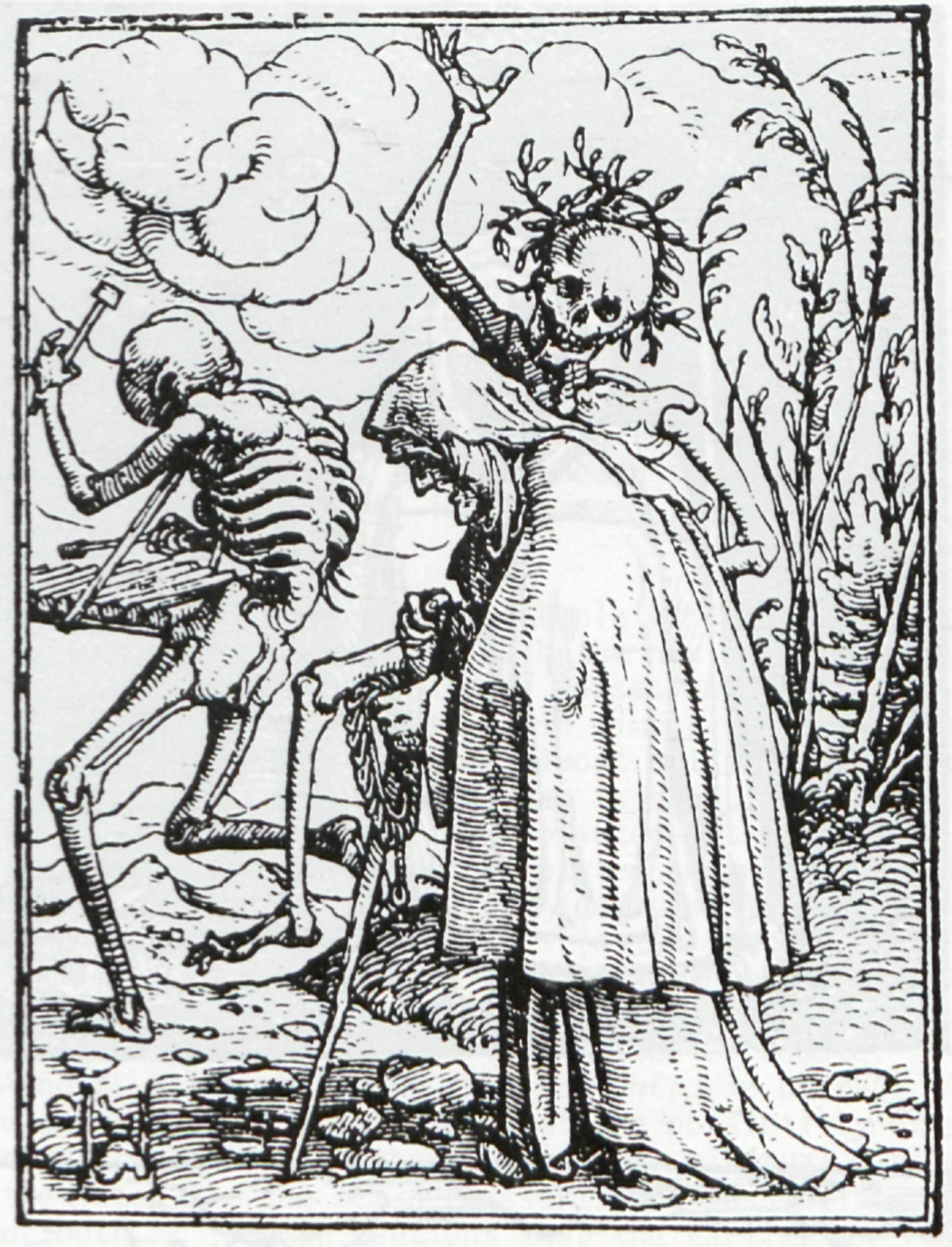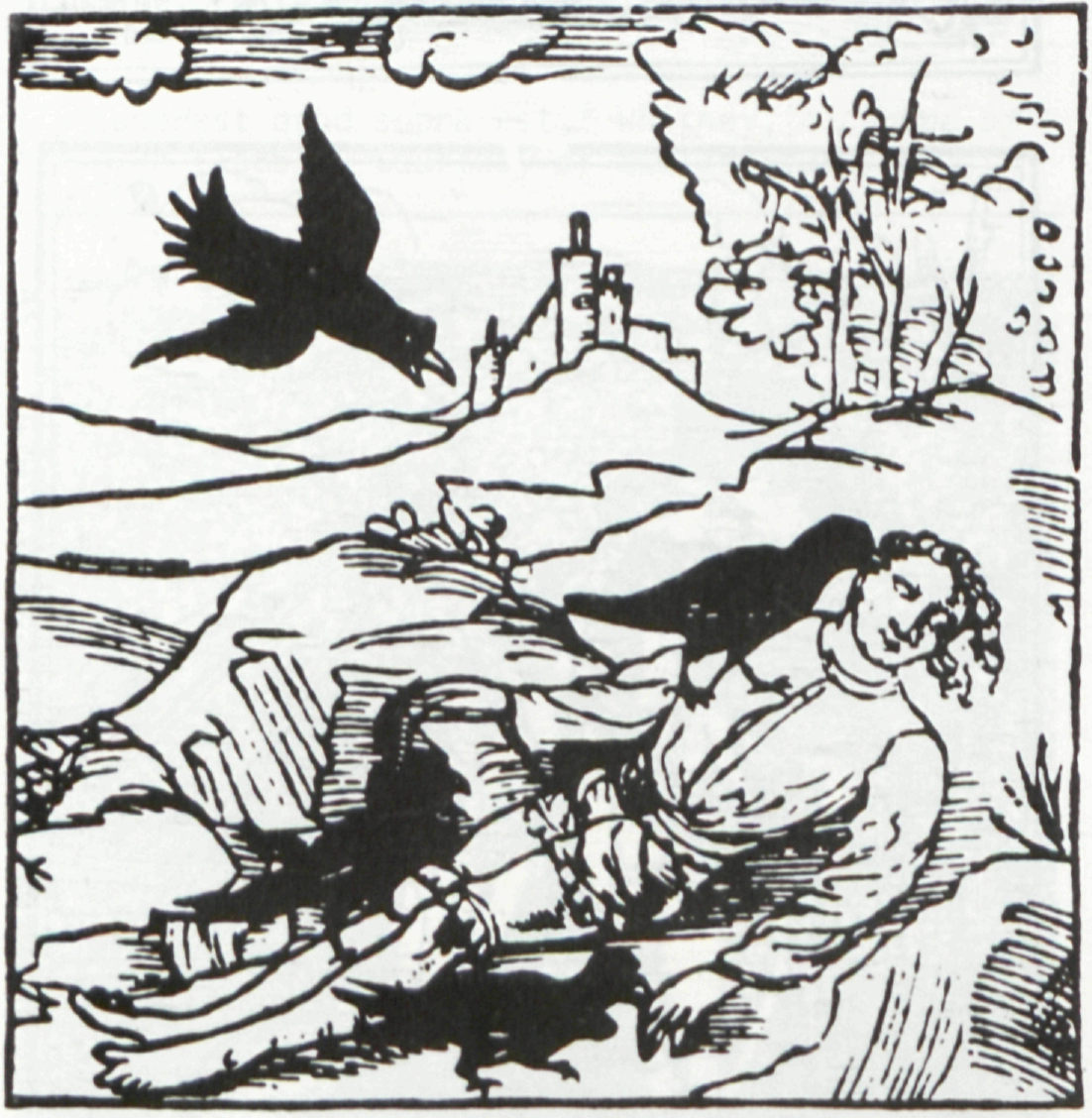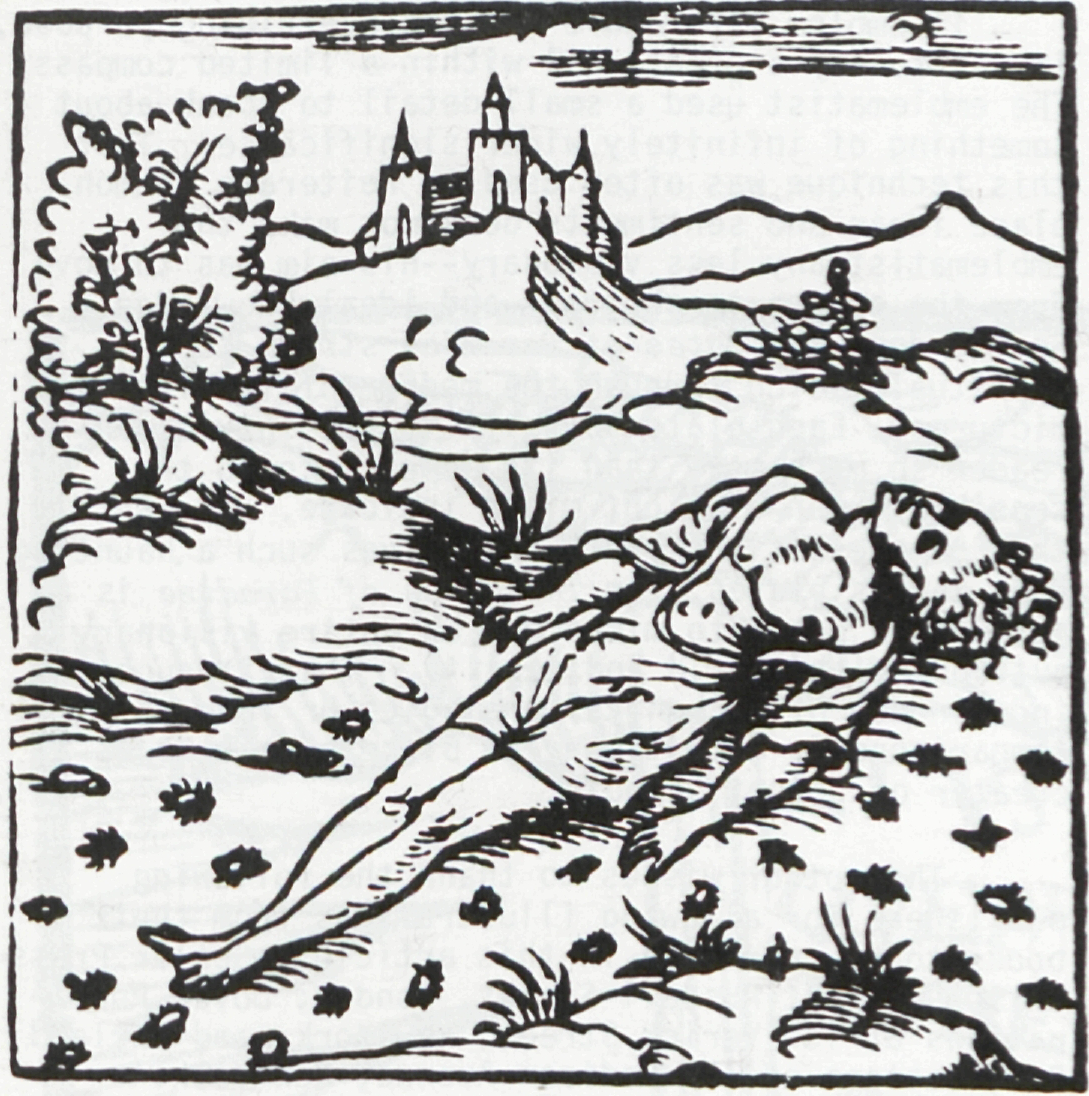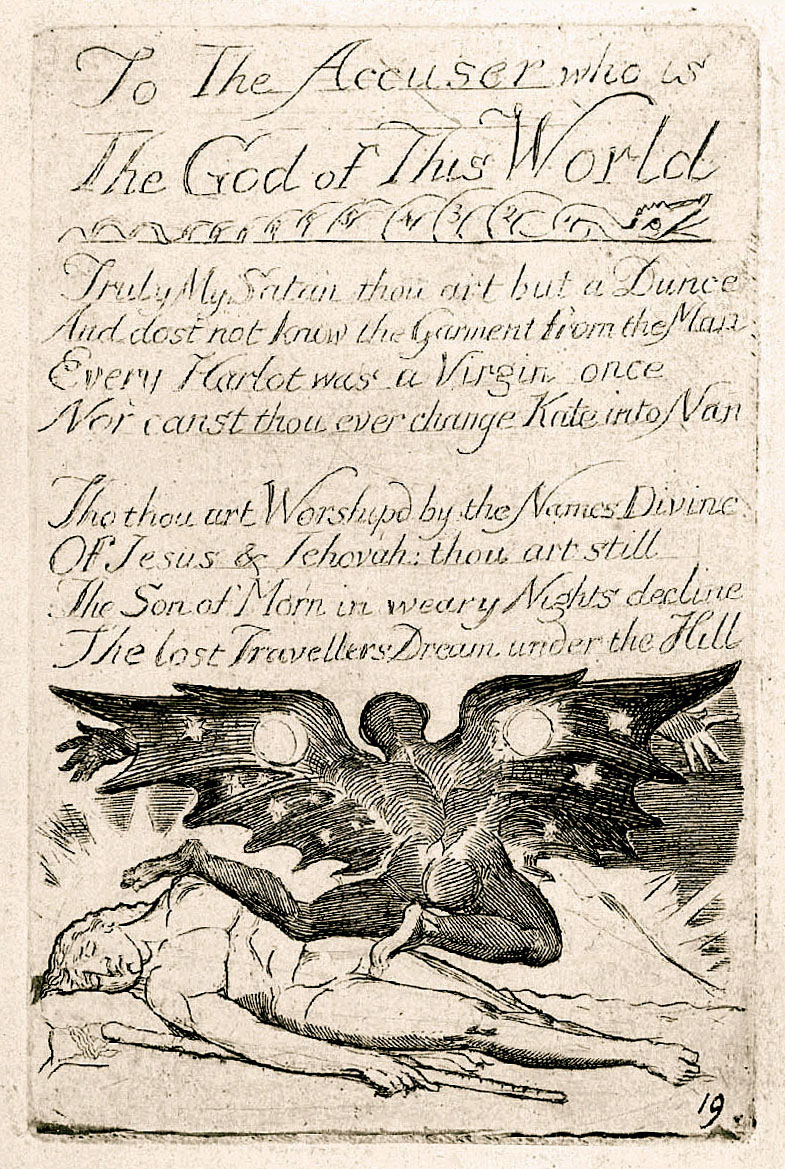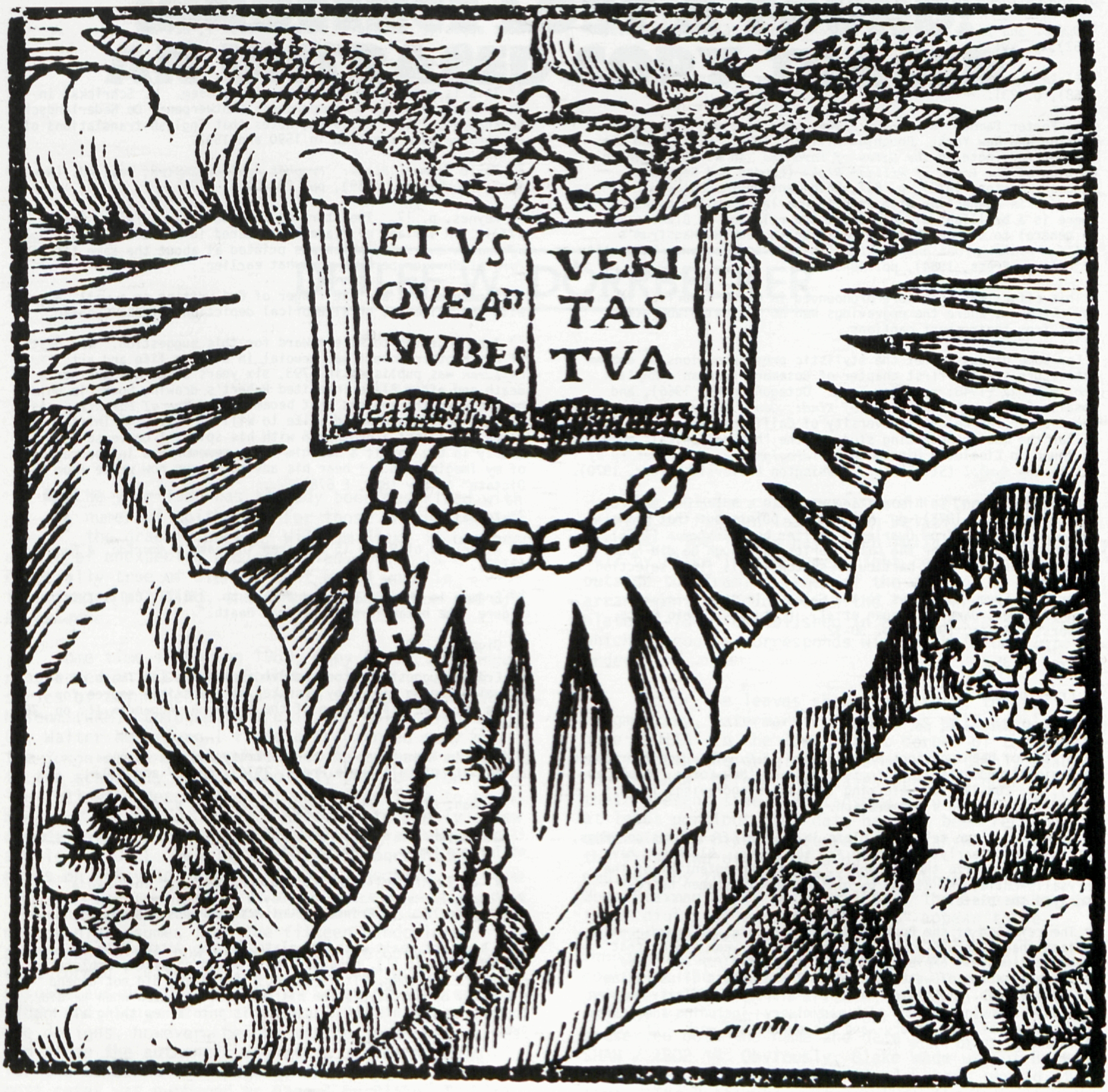If only in its brevity and reticence, William Blake’s The Gates of Paradise1↤ 1 This small volume was issued in 1793 with the title For Children: The Gates of Paradise. It was reissued with a number of alterations and additions around 1818, with the new title For the Sexes: The Gates of Paradise (see Keynes, Introductory Volume in The Blake Trust facsimile, London: Trianon Press, 1968). In this paper, a reference to The Gates of Paradise indicates an unchanged aspect of both versions, while significant differences are referred to under the rubrics of For Children and For the Sexes. differs noticeably from the expansiveness and epic scope of his later prophetic works. Critics have marked the terseness and elliptical style of this small book which, symbolically enough, appeared at both the beginning and the end of Blake’s career. In a very detailed and carefully considered study of The Gates of Paradise, George Wingfield Digby states that “its concise and epigrammatic style makes it difficult to understand,”2↤ 2 Symbol and Image in William Blake (Oxford: Clarendon Press, 1957), p. xvi. and John Beer prefaces his discussion of the plates by saying that their obscurity “is partly due to the compression of thought which lies beneath them.”3↤ 3 Blake’s Humanism (Manchester: Manchester University Press, 1968), p. 231. Any serious study of The Gates of Paradise must not only try to illuminate the meaning of Blake’s work, but must also try to account for his choice of a clipped and almost hieroglyphic form, and one depending so heavily on the reader’s intuitive perception of that very meaning.
Although commentators have casually mentioned the similarity between The Gates of Paradise and traditional emblem books, no systematic study of the plates in relation to emblematic motifs has been attempted.4↤ 4 S. Foster Damon, in William Blake: His Philosophy and Symbols (Boston and New York: Houghton Mifflin, 1924), p. 83, and the introductory note to The Gates of Paradise in W. H. Stevenson’s edition of The Poems of William Blake (London and New York: Longman, Norton, 1972), p. 841, both mention The Gates of Paradise in connection with Francis Quarles’s emblem books. There is a brilliant discussion of the relation of Blake’s art in general to the emblematic tradition in Jean H. Hagstrum’s William Blake: Poet and Painter (Chicago and London: University of Chicago Press, 1964), pp. 48-57. The faults of emblem books are many: their one-to-one symbolism is tiresome and predictable, their poetry is often mediocre and banal, and their intention is to moralize in the worst sense of the word. It is difficult to think of an artist of Blake’s stature as doing anything other than transcending such a genre if he chose to work with it. In fact he does so, as I hope to demonstrate. But many great things have humble beginnings, and the question that must occupy us here is this: Does emblem literature provide a background of reference for The Gates of Paradise? I suggest that Blake’s small volume shows a close relation with early emblem books, and I propose to consider both the structure and the content of The Gates of Paradise by seeking out specific parallels in emblem literature for some of its engravings.
At first glance, The Gates of Paradise appears to be the quintessential emblem book. In both outward appearance and composition it is remarkably similar to many of the small volumes of symbolic woodcuts and engravings so popular throughout Europe in the sixteenth and seventeenth centuries. As with emblem books, the primary impact of The Gates of Paradise is visual, deriving its evocative power from the dominance of the engravings rather than their textual accompaniment.5↤ 5 This effect was even more pronounced in Blake’s earlier version For Children, where the engravings had no textual elaboration apart from their short captions. Most of the plates do not reveal their meaning immediately; rather, by themselves they are of uncertain interpretation. This suggests that hieroglyphical quality so characteristic of emblem literature, wherein meaning is embedded in visual metaphor and analogy.6↤ 6 For some discussion of the stylistic presuppositions of emblem literature see the first chapter of Rosemary Freeman’s English Emblem Books (1948; rpt. New York: Octagon Books, 1966), and Rosalie Colie’s The Resources of Kind: Genre Theory in the Renaissance (Berkeley: University of California Press, 1973). By far the most penetrating study of the “hieroglyphical” mode is found in Liselotte Dieckmann’s Hieroglyphics: The History of a Literary Symbol (St. Louis: Washington University Press, 1970). Moreover, each engraving is accompanied by a small, terse phrase or sentence beneath it, sometimes only cryptically or obliquely related to the illustration. Such a phrase or sentence corresponds to the motto of the conventional emblem: a short proverb, tag, or quotation which provided a key to the meaning of the symbolic picture. And finally, the verse “Keys” or poetic elaborations of each engraving which Blake appended to For the Sexes serve the same function as the explanatory verse accompanying traditional emblems.
begin page 109 | ↑ back to top
In content, The Gates of Paradise is also reminiscent of emblems. An important function of the emblem book was to be a mirror of the life of man; it depicted graphically the vices, follies, virtues and strengths of the human race, along with appropriate admonitions and judgments. In a similar manner, the central concern of The Gates of Paradise is man’s predicament qua man. Blake’s engravings are a sequential representation of human experience from infancy to death, designed to illuminate the reader with moral and spiritual insights. In this respect The Gates of Paradise resembles Francis Quarles’s Hieroglyphikes of the life of Man (1638), an emblem book which traces in a series of fifteen small engravings the progress of life from birth to extinction.7↤ 7 David V. Erdman, in his edition of Blake’s Notebook (Oxford: Clarendon Press, 1973), pp. N23 and 92, points out that Blake included a design from Quarles’s earlier book Emblemes (1635) among his sketches for the Gates series, although he did not choose to engrave that particular sketch in his final selection. Like all emblem books, Quarles’s work is deliberately didactic, and given to pious moralizings which are absent from The Gates of Paradise. Yet Blake’s book is subtly propaedeutic in many ways. Its very title in both versions (For Children, For the Sexes) suggests that Blake was consciously directing his effort to the illumination of his readers, and although his engravings are appreciable as works of art in themselves, the fact that Blake provided “Keys” in the later version indicates that he thought it important for people to disengage some kind of meaning from them. In short, The Gates of Paradise was meant to teach certain truths about the human condition, and this is a purpose that it shares with earlier emblem literature.
One easy way of looking at The Gates of Paradise (surely too easy a way) is to see it as a sequential unfolding of the human soul’s struggle to break free from the cycle of disordered desire, thereby coming to an acceptance of mortality and mortal limits. Traditional emblem literature could offer many precedents and parallels to such a conventional reading. But a critic always walks on thin ice whenever he imagines that Blake can be reduced to a moralist or sermonizer, even in those places where, to the casual reader, he seems to be offering the blandest sort of sentimental piety. Blake’s angel was always ready to become a devil. Northrop Frye has pointed out that The Gates of Paradise does indeed attempt to end a futile struggle, but that it is precisely the vicious circle of unthinking orthodoxy and raging rebellion from which Blake wishes to free the soul.8↤ 8 Northrop Frye, “The Keys to the Gates,” in Some British Romantics, ed. James V. Logan et al. (Columbus: Ohio State University Press, 1966), pp. 30-32. The lesson of The Gates of Paradise is not fatalistic acceptance of the world as it is, but a call “to transform the world into a human and imaginative form.”9↤ 9 Frye, p. 35. According to Frye, “The natural tendency of desire . . . in itself is to find its object. Hence the effect of the creative impulse on desire is bound to be restrictive until the release of desire becomes the inevitable by-product of creation.”10↤ 10 Frye, p. 38. Such a reading of The Gates of Paradise is miles away from the conventional: Blake is not arguing for the cessation or even the control of “evil” desire, but for its transmutation into art. Similarly David Erdman in his detailed study of Blake’s Notebook points out that although the emblems in The Gates of Paradise series all focus on human mortality, the series as a whole shows an irresistible impulse to break free from the mechanical finality of a birth-to-grave cycle.11↤ 11 Erdman, Notebook, pp. 40-44. Echoes of the traditional memento mori run through The Gates of Paradise, but for Blake that motif is only a convenient framework in which his own ideas can move, and out of which they finally burst.
The frontispiece and Plate 1 of The Gates of Paradise12↤ 12 Plates of both versions of The Gates of Paradise are reproduced in David V. Erdman’s The Illuminated Blake (New York: Doubleday, 1974), pp. 268-79. In referring to Blake’s engravings in this paper, I use Erdman’s enumeration. are imaginative portrayals of human birth, but this birth must be understood in more than the physical sense. The frontispiece shows two leaves stemming from a single branch; a dark leaf bearing a caterpillar arches over a lighter one on which a larva-like infant sleeps. Plate 1 reveals a woman stooping to pluck a living child out of the earth by his hair; she carries an infant in her other arm. We see in these plates two phases corresponding not only to fetal growth and to birth, but to the psychological states which gestation and birth symbolize. The chrysalis-child sleeps in a world totally submerged in unconscious, vegetative existence; hence the dominance of the dark leaf in the plate. Like the caterpillar he is segmented (although this may be a deliberate ambiguity, suggesting swaddling clothes as well), showing his unbreakable link to the world of matter, but he bears incipient wings13↤ 13 As far as I can tell, the plate in For Children shows no wings, but they are clearly visible in For the Sexes. Blake may have wished to emphasize the embryonic, unrealized potential of the chrysalis-child, and did so by giving him wings when he re-engraved the plate. which hold the promise of flight, i.e. the transcending of purely physical existence. It seems that what is symbolized here is the eternal possibility of human consciousness, hidden in the dark sleep of matter. Similarly, the birth of the child in Plate 1 is only secondarily by way of a woman, but primarily from the earth. This birth is an eruption of consciousness from ageless roots, one which is only paralleled in physical parturition. Moreover, the child pulled from the earth has hair but the carried child has little or none; the face of the child in the earth bears a look of independence and strength while the carried child is helpless and dependent. If we take these children to be one and the same child—as I think the “Key” compels us to do—then the interpretation seems to be that although through physical birth we are subjected to the dominance of “feminine” reality, our actual origins are in an impersonal matrix of existence in reference to which our true strength and independence must develop. Both plates demand that the reader go beyond the actual illustration; they are clearly allegorical in the sense that they point obliquely toward some not immediately apparent meaning. This is an emblematic technique which Blake employed frequently, but which seems to be particularly evident in The Gates of Paradise, where so little text accompanies the engravings.
Just how emblematic the two plates are can be judged by comparing them with emblems from two wellknown texts. An illustration from Andrea Alciati’s Emblematum Liber shows an infant in swaddling clothes lying beneath an almond tree. The emblem’s intent is to use the early bloom and flowering of the almond as a metaphor for precocious children: both bear fruit early, but are subject to untimely extinction as well. An illustration from Philip Ayres’s Emblemata Amatoria (1683) shows the god Love scattering his “seed” over the earth in the form of children. As in Blake’s plate, these children are half-buried in the earth, where they seem to grow like plants. Although one would be hard put to establish any connection (either thematic or derivational) between these emblems and Blake’s engravings, the curious similarity in conception deserves to be noted. But it should begin page 110 | ↑ back to top
also be noted—and this point comes up again and again when considering The Gates of Paradise in the light of superficially similar emblems—that Alciati and Ayres attempt merely to visualize a simile or metaphor, whereas Blake never allows any of his plates to be so easily reduced to a simple figure of speech.
The following four plates in the series (2, 3, 4, and 5) are thematically related as elements, but it is useful to consider them individually. Plate 2 (“Water”) presents a man inundated with rain and stricken with sorrow. Critics have suggested a number of interpretations, from a simple “vale of tears” motif to a neoplatonic symbolism of water as illusory matter. From Blake’s Notebook it is clear that Hamlet’s grief and Scriptural allusions14↤ 14 The relation of the Book of Job to The Gates of Paradise is a subject that deserves scrutiny. In the same year (1818) that Blake reissued his emblem book under the title For the Sexes, he began a series of watercolors for Thomas Butts illustrating the Book of Job. Blake must have felt a special affinity between the Bible’s moving account of human misery—including the ethical implications of that misery—and his own little work. Cf. Job 14:19 and 27:20 to Plate 2. have gone into the picture’s conception, but along with these valid considerations we must include, I suggest, the emblematic convention of the weeping sky or heaven. An emblem from Henry Peacham’s Minerva Britanna (1612) is a good example of this motif, and the connection is supported by Blake’s caption “Thou Waterest him with Tears,” which suggests that, as an image, the falling rain in Plate 2 is an hypostatization of sorrow.15↤ 15 The emblematic image of the “weeping heavens” occurs also in Henry Hawkins’s Partheneia Sacra, 1633 (Menston, Yorks.: Scolar Press, 1971), pp. 59-60. Hawkins explains that “as the showres were wrung and drawn from Magdalen through contrition of her sad and clowdie hart: so these Deawes are wrung and strained from heaven, through compression and mutual collision of the clowds.”
Plate 3 of the series depicts “Earth,” but Blake’s verse “Key” to the later version speaks of this figure as “Struggling Thro Earths Melancholy.” It is clear, I think, that Blake had in mind not simply the physical elements of the Ionian tradition but also the states of the human psyche for which these elements are metaphoric equivalents. The figure in Plate 3 is somehow restrained in dark stone or earth, and his torment is as much mental
begin page 111 | ↑ back to top as it is physical. Blake may be allegorizing here the spirit of man trapped in its “garment of flesh,” struggling to assert itself against the body’s ponderous limitations. It is interesting to compare the plate with another emblem from Peacham, one of many stock representations of “Melancholia” in emblem literature. Here a gagged, solitary figure sits holding a full purse, with his foot on a stone block. Although a merely casual comparison reveals no resemblance, what connects the woodcut and Blake’s engraving is the atmosphere of heaviness and restraint that pervades both pictures. Plate 3, I believe, draws on both a visual and verbal tradition of the sluggish and oppressive qualities of “black bile.”
This is not to say that there is no important difference between Blake and Peacham. On the contrary, the two plates also demonstrate how Blake can use an emblematic commonplace while at the same time standing it on its head. Emblematic depictions of melancholy or grief tend to be static; that is, they portray images of immobility. Blake’s plate, however, suggests an irrepressible energy breaking through oppressive limitations. The caption “He struggles into Life” implies as much, and the composition of Plate 3 follows an upwardly rising thrust into light and freedom that is a key to the whole thematic movement of The Gates of Paradise. Thus the old melancholia of the emblematists is transformed from a disorder of the bodily humors into a symbol of those material and psychic shackles from which the spirit of man must be freed. As is the case with other plates in The Gates of Paradise, the characteristically Blakean theme nearly overwhelms any residual memory of the emblematic antecedent.
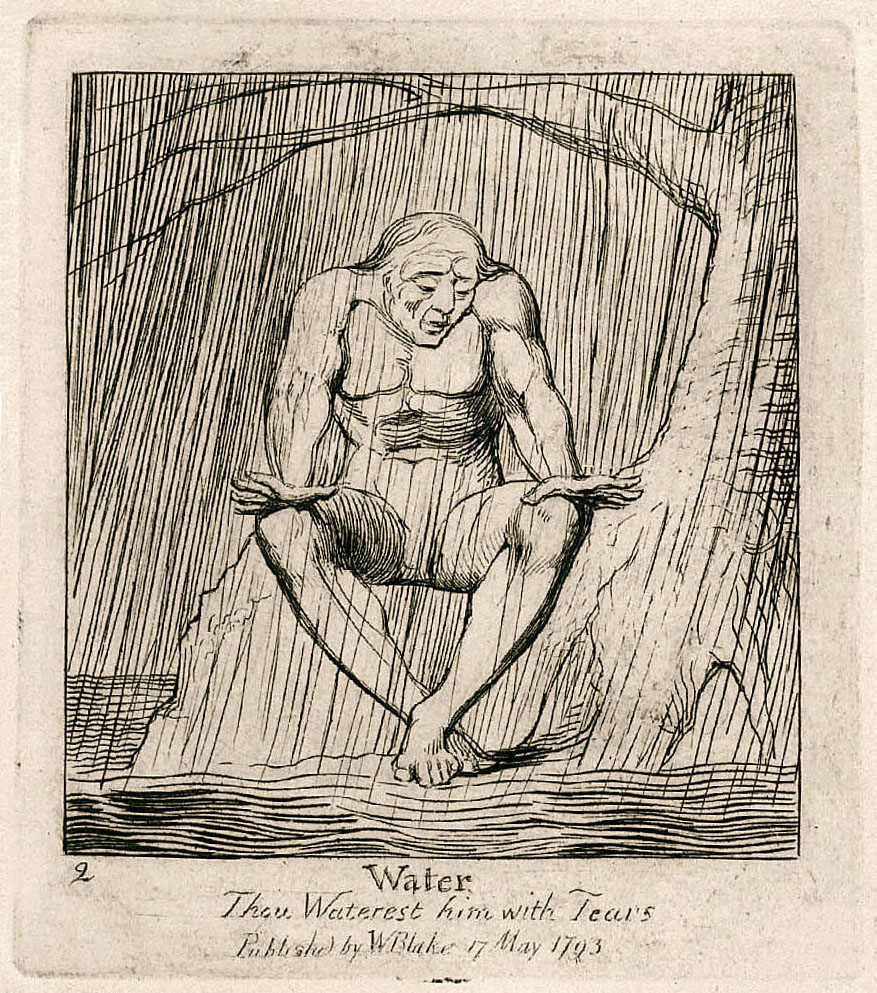
[View this object in the William Blake Archive]
begin page 112 | ↑ back to top
Plate 4 shows a naked figure in a somewhat contorted pose, sitting amid clouds and stars. According to Blake’s Notebook16↤ 16 See Erdman, The Illuminated Blake, p. 270. the engraving is connected with the Book of Ezekiel, and it may represent the tyranny of sterile, Urizenic “reason.” If this is a correct interpretation, we might well consider that the use of stars and constellations in the depiction of overweening intellectual pride is common in emblem literature. Alciati’s emblem “In Astrologos,” for example, shows an astrologer gazing upward at the stars just as he is about to take a false step and fall. The joke is an old one, as the pejorative connotations of phrases such as “star-gazing,” “starry-eyed,” and “star-struck” attest.
The last plate in the series of elements seems to bring to a climax the ascent that is so noticeable
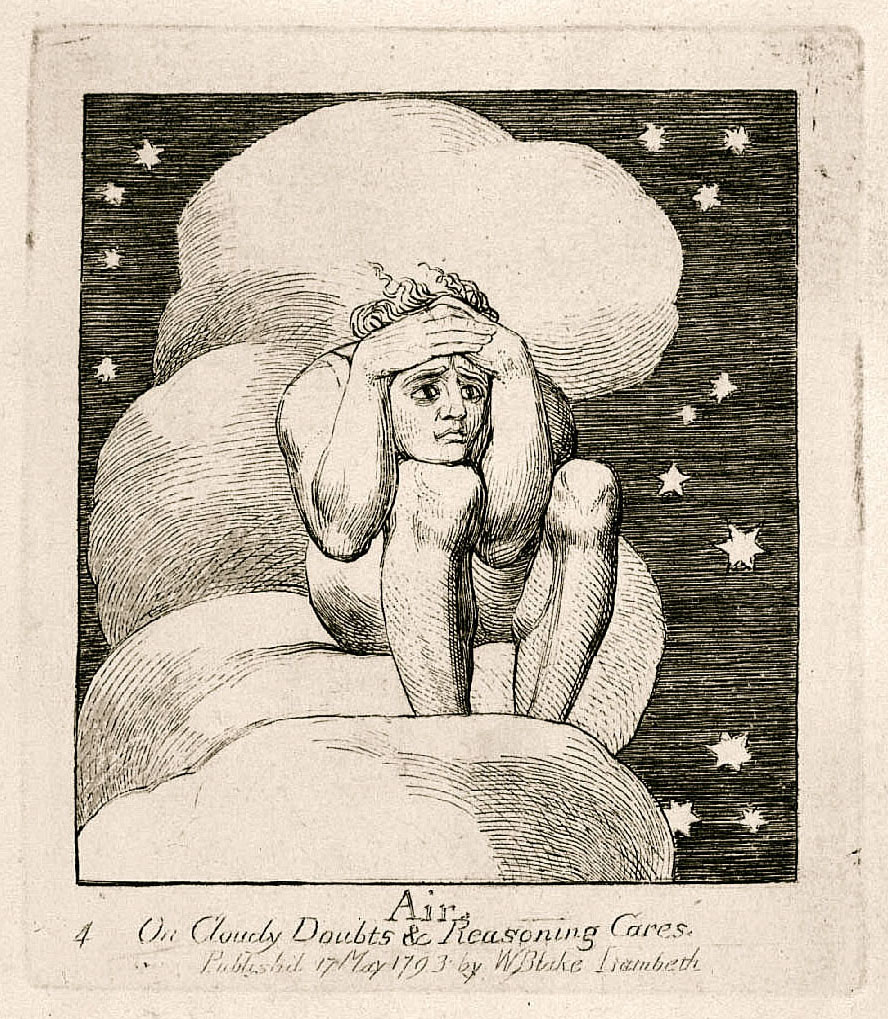
[View this object in the William Blake Archive]
in the progression from Water to Fire. Plate 5 has undergone a metamorphosis between the two versions of The Gates of Paradise, Blake apparently having decided to emphasize the Miltonic genesis of his “Fire” image.17↤ 17 See Keynes, The Gates of Paradise, intro. vol. p. 13. The most apposite passage is Paradise Lost I, 221-22. Here a raging figure stands in flames which mirror his own defiance and anger, and the Satanic touch Blake gave the plate in For the Sexes is notable as the only change of significant detail between the earlier and later versions. It should also be noted that the “Key” speaks of this figure as a Hermaphrodite, and that there is a deliberate ambiguity in the depiction of the sexual organs, especially in the earlier plate.
Plate 5 is notable for another reason as well. Certainly the image of “Fire” is purely Blakean in some ways (it recalls the Orc figure in all its various meanings, and the figure’s posture echoes “Albion Rose”), but it may also derive some of its connotations—and even its visual composition—from traditional emblematic depictions of “Choler” or “Anger.” Compare Plate 5, for instance, with two emblems from Peacham and Whitney. Peacham’s device shows a man with weapon and shield, and the explanatory verse specifically mentions that he is a youth. On his shield is a flame, and the verse speaks of the resemblance of rage to an uncontrollable fire. The emblem from Geffrey Whitney’s A Choice of Emblemes (1586) depicting the same passion presents a king—again with weapon and shield—who stands with a burning city behind him. Flame and fire are mentioned in the explanatory verse for this emblem also. In both pictures the figure raises his weapon as if threatening to strike, and symbolizes the eruptive irascible aspect of human nature in all its “fiery” manifestations. Blake’s conflation of the element and the temperament begin page 113 | ↑ back to top
(which we have noted in Plate 3 as well) was not original with him, but finds its parallel in these early devices.
Plate 7, which shows a youth raising his hat to capture or strike down a small flying creature, may be directly linked to an emblem book published during Blake’s lifetime. David Erdman reproduces an emblem from John Wynne’s Choice Emblems (1772) as a probable source for Blake’s design.18↤ 18 Erdman, Notebook, p. 92. Wynne’s woodcut depicts a boy chasing a butterfly, and the emblem allegorizes “Vain Pursuits.” Wynne may have been the source for Plate 7, even though Blake was interested in depicting futility and frustration as inner states of the soul, and not in moralizing about vanity. But I think it more likely that two emblems from Whitney can provide clues to Blake’s meaning. One shows a man with a winged arm reaching skyward, while his other arm is weighed down by a heavy stone. The emblem is an image of human desire and aspiration held in check by want and necessity. Another emblem depicts a man unsuccessfully striving to catch a bird that flies from his grasp, and it allegorizes our inability to recall a word spoken hastily. Both emblems share something of the despair and helplessness that Blake’s plate conveys. The contrast of upwardly aspiring desire and downwardly fatal despair, combined with the notion of irrevocable consequences, might be useful starting points for the interpretation of Plate 7.
Other plates in the series also show curiously emblematic reminiscences. In Blake’s eighth engraving a youth aims a dart at his father, who sits in resigned carelessness; this perhaps allegorizes the rebellion of youth against aged authority. At any rate, the plate hints at a psychic imbalance that

[View this object in the William Blake Archive]
begin page 114 | ↑ back to top
has disrupted the human personality. It is strikingly similar in composition to an emblem from Guillaume de la Perrière’s Le Theatre des bons engins (1539). In both cases a young man’s energy and impetuosity are contrasted with the slugginess and languor of old age. Both young men carry weapons, held aloft, and both old men are seated on thrones in positions suggesting incapacity or irresolution. In Blake’s plate, of course, the anger of the youth (along with his weapon) is aimed at the old man, and the reference in the caption to the story of David and Absalom gives a more certain context to the engraving. But the close resemblance that Blake’s plate bears to Perrière’s woodcut makes it tempting to believe that Blake saw a copy of Le Theatre.19↤ 19 This is not as farfetched as it may seem. W. Schrickx, in Shakespeare’s Early Contemporaries (Antwerpen: De Nederlandsche Boekhandel, 1956), pp. 9-10, notes that English translations of Le Theatre were prepared in 1590 and 1593.
Plate 9 shows a man about to ascend a ladder to the moon. Erdman has pointed out that Blake may have taken this image from a political cartoon of his day,20↤ 20 David Erdman, Blake: Prophet Against Empire, rev. ed. (New York: Doubleday, 1969), pp. 203-04. but the idea of representing hopeless aspiration with an inaccessible moon or stars is common in emblem books. Alciati’s emblem “Inanis impetus” is a good example: it shows a dog baying fruitlessly at the moon. This same emblem reappears in Whitney’s book. Plate 10, which shows a figure drowning in a tempestuous sea, has the caption “Help! Help!” This engraving seems closely related in meaning to Plate 9, where the caption “I want! I want!” is similarly urgent. Both plates describe a desire that overwhelms its subject, and Plate 10 is an image of unbridled desire at its catastrophic conclusion. Compare it with an emblem from Whitney showing a shipwrecked merchant tossed in the waves. The explanatory verse to Whitney’s emblem is as follows:
Desire to haue, dothe make vs muche indure,
In trauaile, toile, and labour voide of reste:
The marchant man is caried with this lure,begin page 115 | ↑ back to top Throughe scorching heate, to regions of the Easte:
Oh thirste of goulde, what not? but thou canst do:
And make mens hartes for to consent thereto.
A negative comment, to be sure, on the evil effects of uncontrolled desire.
Plate 12 of The Gates of Paradise is unusual in that it is the only one of the series to deal with a specific historical event. The engraving in question depicts the brutal starvation-murder of Count Ugolino and his family in the dungeon at Pisa, and Keynes, in his commentary on The Gates of Paradise, suggests that Blake must have been familiar with Dante’s Inferno prior to the publication of For Children.21↤ 21 Keynes, p. 17. The story of Ugolino is in Inferno, Canto XXXIII. A variant of Plate 12 appeared in Blake’s The Marriage of Heaven and Hell, which was printed at about the same time as For Children or perhaps somewhat earlier. But even if Blake had come across the story elsewhere, he made use of it in a way that would have been familiar to emblem writers. The portrayal of cruel and historically infamous punishments for the purpose of edification or to provide vivid exempla was a stock-in-trade of emblem literature, as two emblems from Whitney demonstrate. In one, a legendary tyrant orders a living man to be bound to a corpse and thrown into a “denne” to
begin page 116 | ↑ back to top
die; in the other, the story of the barbarous execution of Regulus Attilius is recounted. In either case, the device serves to promote something apart from its own frightful imagery—the second emblem illustrates the virtue of disinterested patriotism; the first, the drawbacks of arranged marriages! Here is where Blake differs radically from the emblem tradition. In The Gates of Paradise Plate 12 primarily communicates the horror of its subject matter; its “moral” (Does thy God, O Priest, take such vengeance as this?) is virtually inseparable from the image of human cruelty that the engraving represents. Blake’s refusal to use either illustration or text as a mere instrument for elucidation of the other is one important way in which his art transcends the moralizing apparatus of the emblem books, and part of the compelling power of certain engravings in The Gates of Paradise rests in the fact that their meanings are simply not reducible to complete “explanations.”
The essential power of Blake’s treatment of the Ugolino episode lies in the unanswered question of the caption of Plate 12, and the disquieting implications concerning human depravity and divine forbearance that such a question brings to mind. For a traditional emblematist to raise this issue would have been virtually unthinkable; emblems deal not in doubt, but in the reinforcement of orthodox wisdom. In the emblematic tradition, cruelty and pain and suffering are merely aspects of the human condition to be explained, catalogued, and moralized; they are never occasions for the questioning of conventional beliefs. But for Blake the reality
begin page 117 | ↑ back to top of extreme torment shatters whatever comforting illusions we might place between ourselves and the brute fact of human bestiality. And Plate 12 is uncompromising not only in its depiction of evil, but also in its refusal to supply any easy answer to the doubts that such an undistorted vision raises.
Plate 13 has no specific emblematic antecedent, although mystical and visionary experiences are sometimes depicted in religious emblems.22↤ 22 Common motifs are the finger of God writing on a wall, a saint with the stigmata, or allegorical depictions of the Godhead. The plate shows a family gathered around the bedside of a dying man, whose spirit rises up majestically from his mortal remains. This engraving comes as the high point of The Gates of Paradise. The disturbing tension and disorder that have been building up in the previous plates give way to a cathartic release of energy, one in which fear and hope reach a pitch of intensity that resolves itself in Vision. Plate 13 may have its source in a painful moment for Blake—the death of his brother Robert in 1787. Blake’s early biographer Alexander Gilchrist mentions that Blake, at Robert’s deathbed, had a vision of his brother’s soul rising heavenwards. Plate 13’s power and intensity may derive from the personal catharsis Blake experienced at that moment.23↤ 23 I am indebted to Aileen Ward for this suggestion. The death of his brother Robert was crucial in Blake’s life and art. For Children was published in 1793, six years after his brother’s death and after Blake inherited Robert’s drawing book, in which he sketched the emblems that became The Gates of Paradise. As late as 1800 Blake would write to William Hayley: “Thirteen years ago I lost a brother & with his spirit I converse daily & hourly in the Spirit & See him in my remembrance in the regions of my Imagination. I hear his advice & even now write from his Dictate” (6 May 1800, E 678).
Plate 14 is one of the least troublesome of the series; it clearly symbolizes the approaching end of life’s journey, and Keynes suggests that it may represent a conscious acceptance of the necessity of death following the spiritual vision of Plate 13.24↤ 24 Keynes, p. 18. In any case, the engraving is certainly one of the most traditionally emblematic in The Gates of Paradise, as comparison with an emblem from Whitney will show. Both pictures reveal a traveller with hat, cloak, and walking stick hastening on his way, and in both the sun seems to
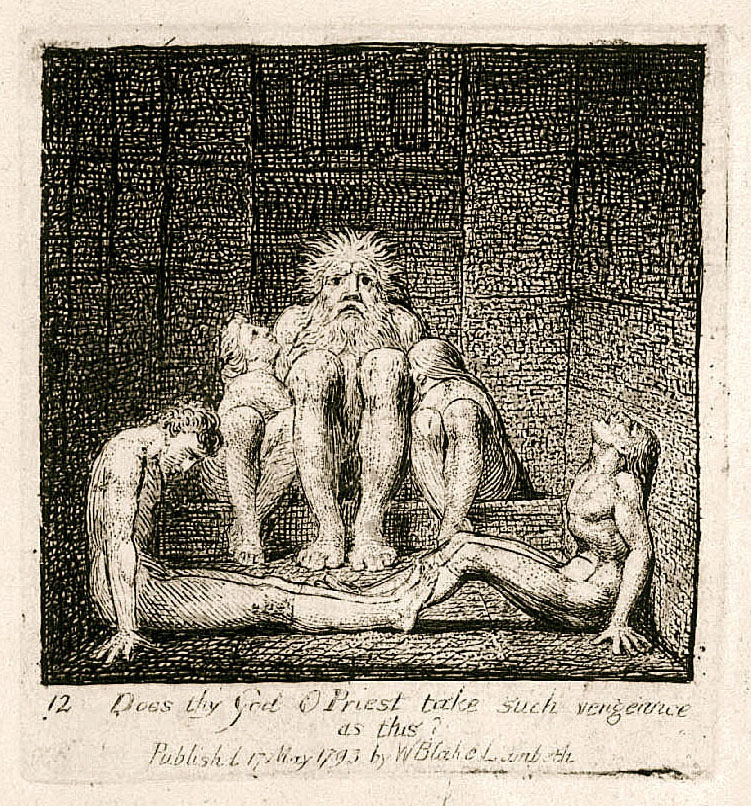
[View this object in the William Blake Archive]
begin page 118 | ↑ back to top
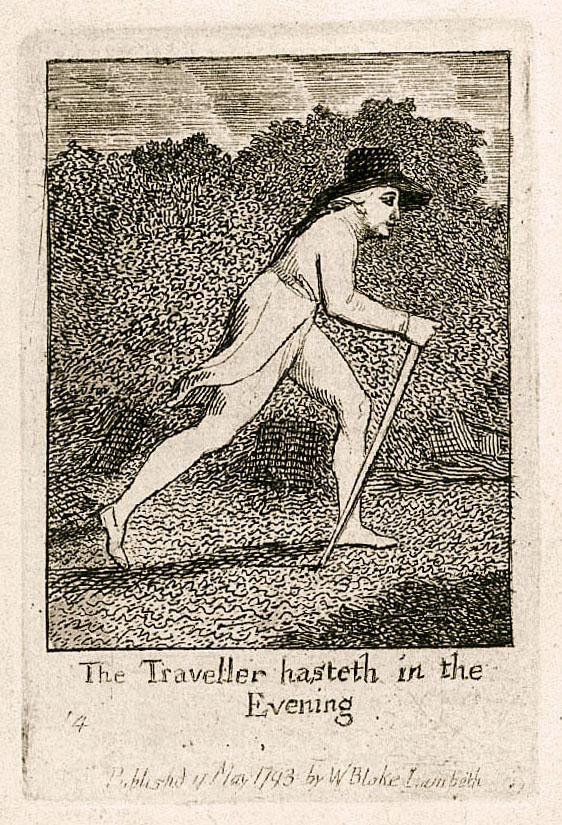
[View this object in the William Blake Archive]
set in the background as the traveller proceeds with fixed determination. The most important similarity, however, lies in the practically identical meaning of the two pictures. Blake and Whitney both present the image of a man taking leave of life and this world for a higher reality. He is a man whom experience has instructed regarding the transience of sublunary things, and one who willingly accepts his mortality. Nonetheless, there is an added dimension in Blake’s picture; taken in context with the rest of the engravings in The Gates of Paradise, Plate 14 seems to suggest that the traveller has been made aware not so much of the impermanence of the world as of its illusory quality. But despite Blake’s expansion of the conventional device to accommodate his own ideas about the “veil” of mundane reality, Plate 14 remains solidly rooted in the emblematic tradition. Although the traveller on the road of life is a conceit which has been a part of the common vocabulary of metaphors since the middle ages, the very close resemblance between Whitney’s emblem and Plate 14 leads me to think that Blake saw A Choice of Emblemes—or some derivative emblem book—before producing The Gates of Paradise.
Plates 15 and 16 end the series. The former is a representation of an old man at death’s door, and has numerous thematic antecedents in emblem begin page 119 | ↑ back to top
literature.25↤ 25 A variant of Plate 15 appeared in Blake’s America, A Prophecy (1793). Hans Holbein’s popular Dance of Death (although not an emblem book in the strict sense) contains many possible parallels. Plate 16, on the other hand, is an extremely thought-provoking picture that has bedeviled many commentators. It shows a figure of indeterminate sex—perhaps the traveller—sitting on the ground in a mesmerized state. Some critics have suggested that the figure is actually dead, or representative of death.26↤ 26 Erdman in The Illuminated Blake, pp. 276-77, calls this figure “the human form of natural death.” Around and behind the figure a large worm coils, while the faces of buried corpses protrude from the earth. Blake’s caption (“I have said to the Worm: Thou art my mother and my sister”) intensifies this rather disquieting intimacy of human being and worm. George Wingfield Digby sees the plate as a representation of an archetypal “Worm-Mother” whose dominion must be escaped by regenerate man.27↤ 27 Digby, p. 50. One’s immediate reaction to this picture usually colors all future judgment; to me it suggests an unearthly detachment from phenomenal reality, a kind of trance-like nirvana that follows long experience.
All commentators on The Gates of Paradise have correctly identified the source of the caption of Plate 16 as a passage in the Book of Job. The complete context of the quotation is an extended lament by Job during his dispute with Eliphaz, Bildad, and Zophar concerning divine justice:
begin page 120 | ↑ back to top

[View this object in the William Blake Archive]
I have said to corruption, Thou art my father: to the worm, Thou art my mother, and my sister.
And where is now my hope? as for my hope, who shall see it?
They shall go down to the bars of the pit, where our rest together is in the dust.Job 17: 14-16 (AV)
The pain which these lines convey in the biblical text is absent from Blake’s emblem. In The Gates of Paradise the icon of death is inseparable (at the completion of the emblem series) from a sense of wisdom achieved after the long journey of life. For this reason I am inclined to believe that another biblical passage has a bearing on Plate 16. This passage is from the Book of Proverbs, in a chapter which warns against the blandishments of an adulteress:
Say unto wisdom, Thou art my sister; and call understanding thy kinswoman:
That they may keep thee from the strange woman, from the stranger which flattereth with her words.Proverbs 7:4-5 (AV)
The similarity of phrasing between this verse and the passage from Job which Blake used as his caption is notable. This particular section of the Book of Proverbs praises the personified feminine Wisdom (Sophia), and contrasts her with the guileful and seductive harlot who leads men to their destruction. The quoted verse is part of a chapter that concludes with this final admonition against the whorish temptress:
Let not thine heart decline to her ways, go not astray in her paths.
For she hath cast down many wounded: yea, many strong men have been slain by her.
Her house is the way to hell, going down to the chambers of death.Proverbs 7:25-7 (AV)
As in the Job passage, the reference to a descent into death and hell is related to Blake’s basic concern in Plate 16—the meaning of human mortality. But once again Blake has radically transcended his sources. He has conflated the anguish of Job and the wisdom of Proverbs into a powerfully evocative image, just as he has done in Plate 13, where fear and hope unite in vision. Moreover, the quoted passages from Proverbs invoke precisely the sort of heaven-hell duality that Blake was so fond of under-mining, and part of the difficulty of Plate 16 may lie in the deliberate fusion of death, wisdom, corruption, understanding, and harlotry that Blake has made out of his sources.
The form and meaning of Plate 16 should be examined in the light of three older emblems. The first two are from Perrière’s Le Theatre, and both depict a dead man lying on the earth. One shows a body attacked by crows that pick and tear at its flesh; the other a corpse from which lice and similar begin page 121 | ↑ back to top
insects flee. Both emblems are visualizations of the evils of flattery: flatterers are worse than crows, since crows only attack dead men while flatterers devour the living, and like lice they desert a corpse once all its vital substance is gone. The third emblem (from Peacham) shows a blind youth girt about the middle with a snake, while a smaller snake gnaws at his heart. This device represents the enslavement of a youth to his follies, the “serpents” of bad conscience and bondage to sin. In each of these emblems animal or insect life serves as an image of the evil, the corrupt, or the anti-human. By using the insect or the reptile as a vehicle for derogatory metaphor and invidious comparison, the emblematists deliberately keep clear the traditional distinction between high and low, life and death, good and evil. Blake, however, transcends these orthodox divisions; he has reached the point in Plate 16 where simple dualities do not represent true vision. Snake and worm are not the repulsive blights familiar in traditional iconography—they are “mother and sister” to the traveller, whose perspective on life and death has been infinitely deepened to include even the darker side of existence.28↤ 28 Erdman suggests another emblem from Wynne (an image of a traveller being bitten by a snake) as a possible source for Plate 16. See his edition of the Notebook, Appendix II, pp. 76 and 92.
Blake re-engraved all the plates of For Children when he reissued his book with the new title For the Sexes, and he added a page of verses and the final engraving “To the Accuser.” In simple appearance, the plates in For the Sexes almost all show a sharper contrast of light and dark than is seen in For Children. Commentators have pointed out several changes of detail in the new plates, but none affects our argument here. There are some visible differences between paired plates (as in the two versions of Plates 5 and 13), but whether the aggregate of these alterations allows for significant changes of interpretation is a matter of debate. Anne K. Mellor believes that For Children betrays Blake’s nascent pessimism about the possibility of human redemption, either earthly or spiritual, while the later For the Sexes reasserts the possibility of both.29↤ 29 Blake’s Human Form Divine (Berkeley and Los Angeles: University of California Press, 1974), pp. 67 and 230. Erdman mentions that the earlier For Children was “considerably revised” when it became For the Sexes, though he does not say whether the changes in any way affected the “universal allegory of creation, growth, and death” that he sees in the series.30↤ 30 Erdman, Blake: Prophet Against Empire, p. 204. Whatever his reason for reissuing The Gates of Paradise, Blake did not substantially alter the composition of his engravings. However much or little Blake’s opinions may have changed between 1793 and 1818 has no bearing on how he may have been influenced by emblematic sources in his original designs.
The new engraving “To the Accuser” is not simply another emblem added to the original series. It illustrates some final epilogue-like verses that Blake appended to For the Sexes:
To the Accuser who is the God of this World
Truly, my Satan, thou art but a dunce
And dost not know the garment from the man:
Every harlot was a virgin once,
Nor canst thou ever change Kate into Nan.Though thou art worshipped by the names divine
Of Jesus and Jehovah, thou art still
The Son of Morn in weary night’s decline,
The lost traveller’s dream under the hill.
Blake’s engraving shows a bat-like creature (presumably a Satanic spectre) hovering over a sleeping traveller. The traveller is only momentarily troubled by the bad “dream” of Satan, who is essentially powerless to harm the inner immortal man. This emphasis on Satan’s impotence recalls an begin page 122 | ↑ back to top emblem from Whitney with a curiously similar resonance. Whitney’s device shows Satan shaking the chain of Divine Law in a futile attempt to break it. He is powerless against the mighty force of Truth, just as Blake’s Satan is helpless against the interior truth that the traveller has gained at the end of The Gates of Paradise. But Blake’s identification of Satan with “the God of this World” (the judging, accusing, law-giving God whose commandments are raised up on the “altars high” of Christians) is a reversal that would truly shock the orthodoxy of the ordinary emblematist.
I hope I have suggested some possible emblematic backgrounds to specific plates in The Gates of Paradise. It would be easy to exaggerate the similarities between individual plates and emblems, and I trust that in my enthusiasm for my subject I have not overstepped the bounds of probability. Coincidence can account for at least some of the parallels noted here—the vast corpus of emblem literature almost guarantees that. But others seem more than fortuitous, especially in those cases where emblems and plates coincide in both pictorial composition and thematic meaning. In such an instance I am fairly certain that we find Blake unconsciously remembering an old emblem, or deliberately reshaping it for his own purposes. In any case, the mere fact that engravings in The Gates of Paradise may have emblematic antecedents is not my main concern. As Peter M. Daly has written concerning the relation of emblem literature to poetry, “The emblematic way of thinking and the emblematic method of composition are undoubtedly more important and more pervasive than the instances of exact parallels with emblem-books.”31↤ 31 Literature in the Light of the Emblem (Toronto: University of Toronto Press, 1979), p. 186. For it is not so much the light which some few emblems can cast on The Gates of Paradise that I am concerned with, as with the discovery that a singularly difficult work of art has been constructed with at least some of the techniques, tools, and materials of an earlier and simpler art.
W. J. T. Mitchell, in an essay that discusses Blake’s union of poetry and painting, contrasts the emblem book’s perception of the relationship of those two arts with Blake’s perception: ↤ 32 W. J. T. Mitchell, “Blake’s Composite Art,” in Blake’s Visionary Forms Dramatic, ed. David V. Erdman and John E. Grant (Princeton, N.J.: Princeton University Press, 1970), pp. 60-61.
The emblem book enjoyed a particularly privileged position because it not only fulfilled the classical ideal of uniting the arts, but also could be seen as a means of providing the most comprehensive possible imitation of a bifurcated reality . . . Blake would agree with the attempt of the emblematists to unite the two arts, not, however, as a means of presenting the full range of reality, but as a means of exposing as a fiction the bifurcated organization of that reality.32
Here may be the “key” that can unlock the emblematic origins of The Gates of Paradise. Blake may have used the emblem tradition only to undermine its orthodoxy, but he depended nevertheless on its structure and characteristic modes to achieve at least some of his effects.33↤ 33 I have not dealt with two plates in The Gates of Paradise sequence (6 and 11), because I have found no likely emblematic parallels for them. It is obvious that Blake did not depend slavishly on prototypes for his designs, and even when he did borrow a design his art transmuted it into a new thing all his own.
If emblem literature had one overriding purpose, it was to say a great deal within a limited compass. The emblematist used a small detail to speak about something of infinitely wider significance. That this technique was often used to reiterate commonplace ideas and sentiments does not make the emblematist any less visionary—his aim was to move from the senses to abstract and ideal knowledge. So too does The Gates of Paradise strive for spiritual vision through the medium of its little pictures. Each plate suggests to the intuitive reader so much more than its appearance to the sensible organ of sight might indicate. It is this that compresses the book, that gives such a haunting aura to its plates, for The Gates of Paradise is an attempt to put into microcosm an entire visionary outlook on the world and reality. That it succeeds independent of mechanical analogies or labored comparisons is a testimony to Blake’s stature as a creator of potent symbols.
The author wishes to thank the following publishers for allowing illustrations from their books to be reprinted in this article: Scolar Press of 90/91 Great Russell Street, London; Dover Publications of 180 Varick Street, New York; and Garland Publications of 136 Madison Avenue, New York.
begin page 123 | ↑ back to top
Print Edition
- Publisher
- Department of English, University of New Mexico
- Albuquerque, NM, USA
- Editors
- Morris Eaves
- Morton D. Paley
- Editorial Assistant in Charge
- Marcy Erickson
- Editorial Assistants
- Wayne Erickson
- George Hartley
- Wendy Jones
- Typist
- Denise Warren
- Bibliographer
- Thomas L. Minnick
- Review Editor
- Nelson Hilton
- Associate Editor for Great Britain
- Frances A. Carey
- Contributors
- G.E. Bentley, Jr.
- Martin Butlin
- Greg Crossan
- Detlef Dörrbecker
- Michael Ferber
- Thomas V. Lange
- Bo Ossian Lindberg
- Donald H. Reiman
- Joseph S. Salemi
Digital Edition
- Editors:
- Morris Eaves, University of Rochester
- Robert Essick, University of California, Riverside
- Joseph Viscomi, University of North Carolina at Chapel Hill
- Managing Editor
- Joe Fletcher
- Assistant Editor Editor
- Michael Fox
- Previous Project Manager and Technical Editor
- William Shaw
- Adam McCune
- Managing Editor Blake/An Illustrated Quarterly
- Sarah Jones
- Project Director and Assistant Project Manager
- Grant Glass
- Project Coordinator, University of Rochester:
- Eric Loy
- Scanning:
- UNC Digital Production Center
- XML Encoding:
- Apex CoVantage
- Additional Transcription:
- Adam McCune
- Jennifer Park
- Emendations:
- Rachael Isom
- Mary Learner
- Adam McCune
- Ashley Reed
- Jennifer Park
- Scott Robinson
- XSLT Development:
- Adam McCune
- Joseph Ryan
- William Shaw
- PHP and Solr Development:
- Michael Fox
- Adam McCune
- Project Assistants:
- Lauren Cameron,
- Rachael Isom,
- Mary Learner,
- Jennifer Park,
- Ashley Reed,
- Adair Rispoli,
- Scott Robinson

